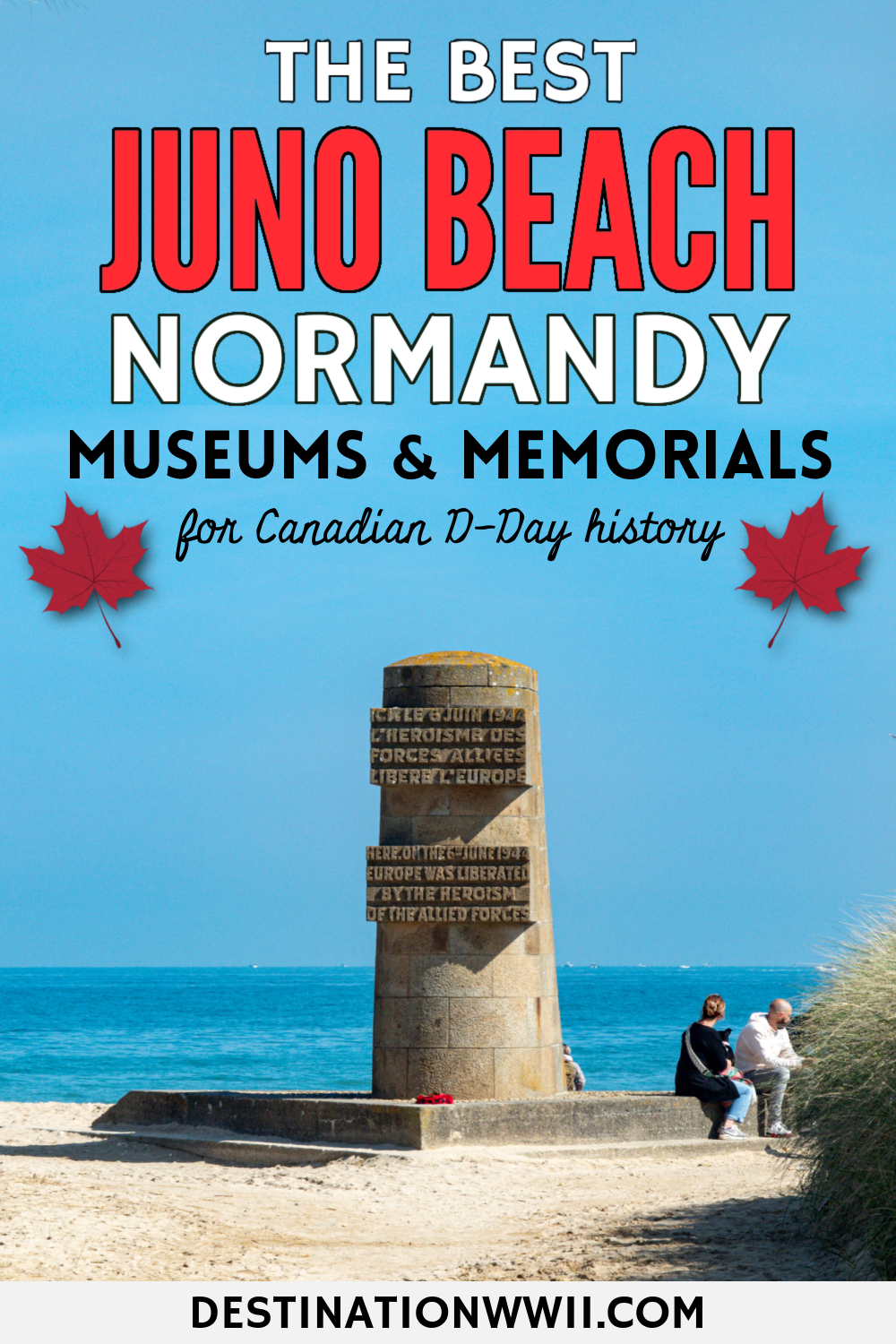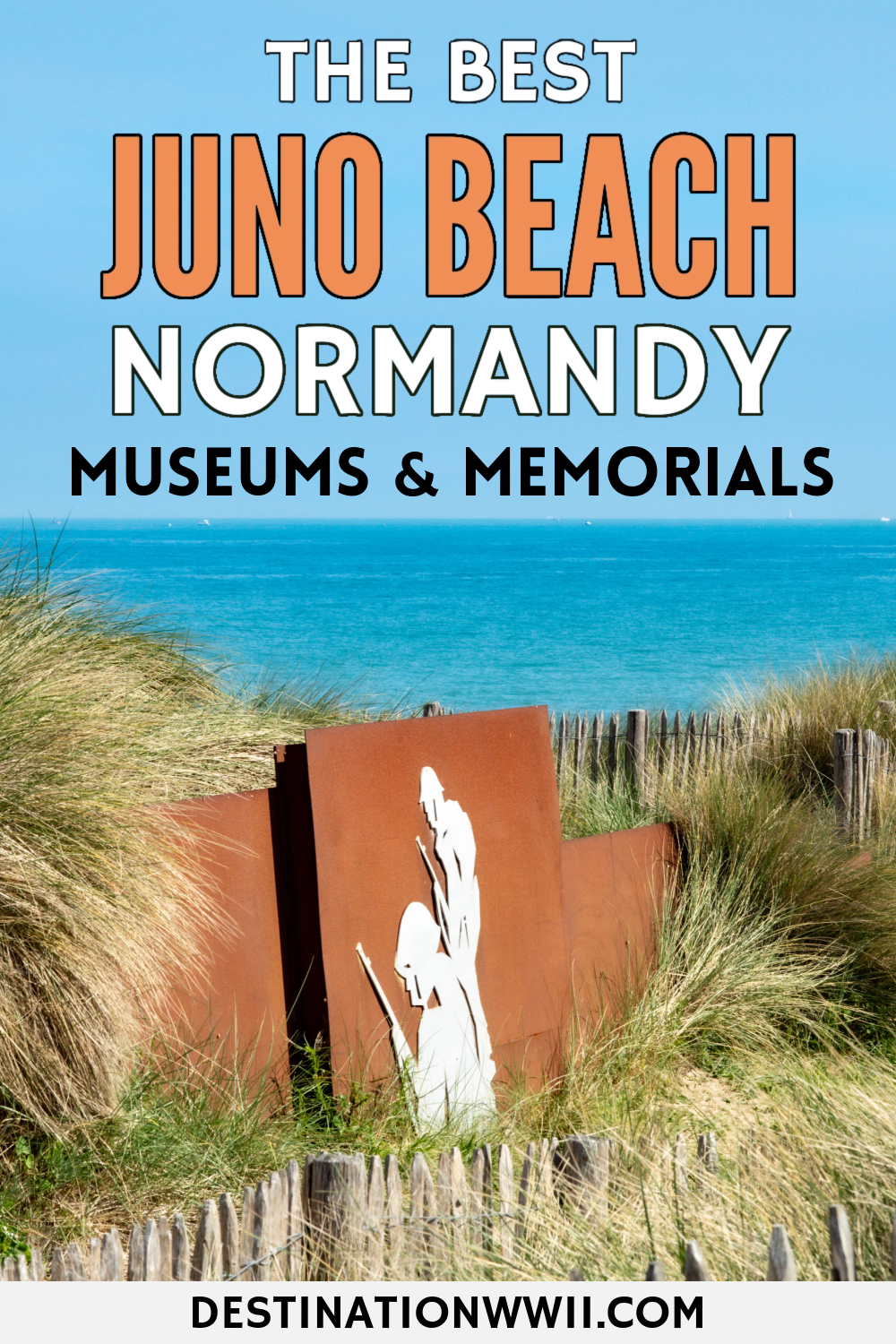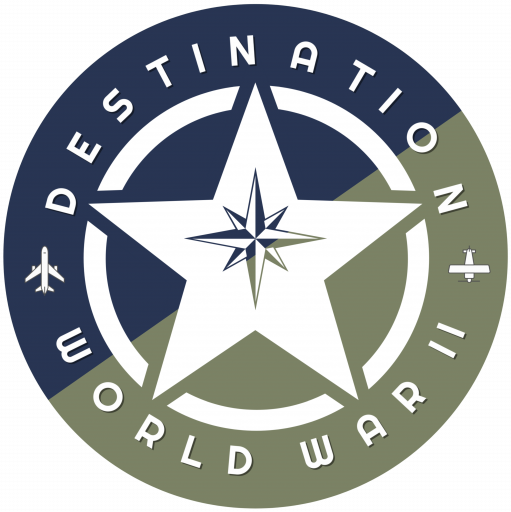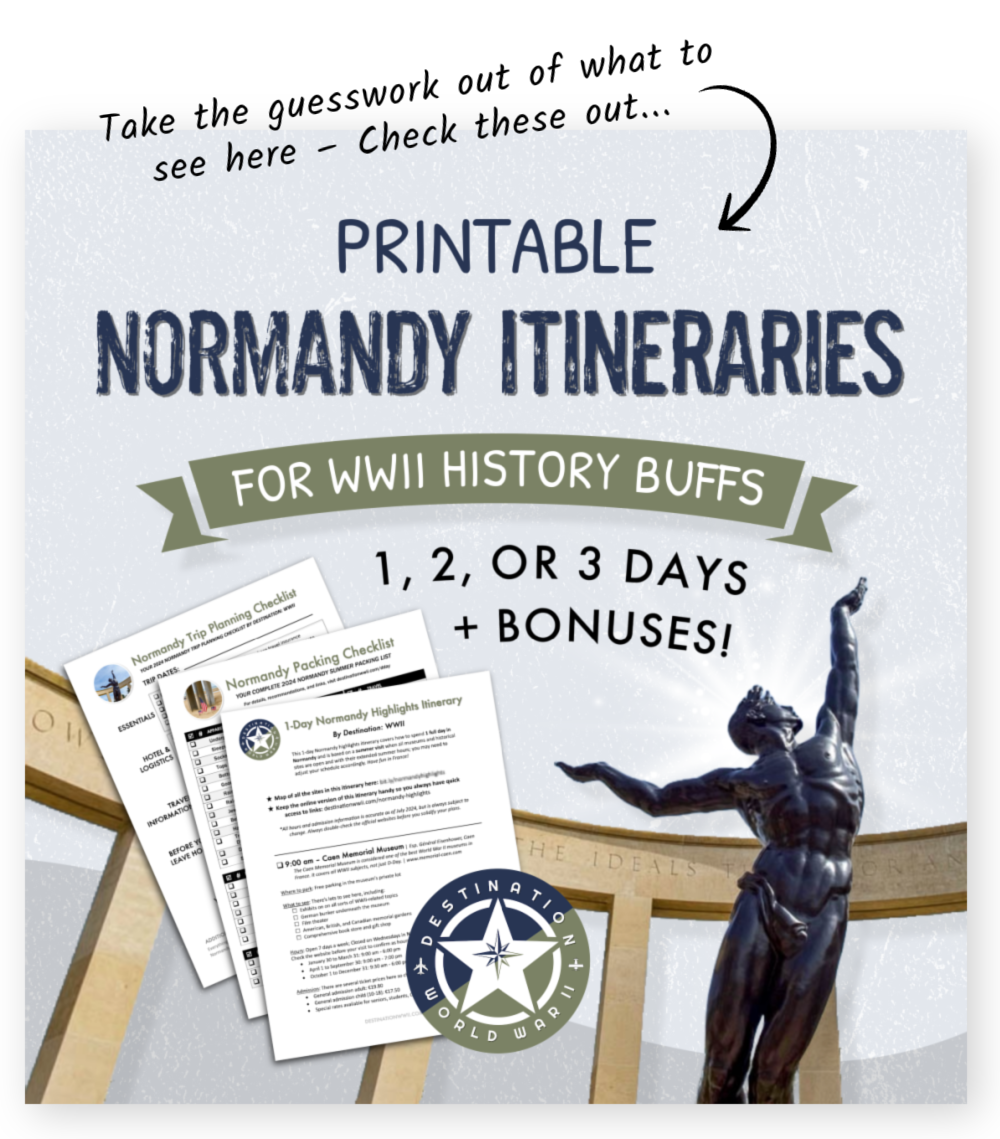If you’ve been wondering about what to see at Juno Beach in Normandy, you’ve come to the right place, eh? That’s me, quoting my Canadian friends, because Juno Beach is all about the Canadian contributions to the D-Day invasion.
Just like the other four Normandy landing beaches, Juno Beach offers lots of great museums and memorials to learn about this historic event. But this one is unique—it’s the only one that was stormed by Canadian troops. (Utah and Omaha were American landing sectors; Gold and Sword beach were British.)
Don’t miss my post on all the great things to see and do at the other four D-Day landing zones: Utah Beach, Omaha Beach, Gold Beach, and Sword Beach.
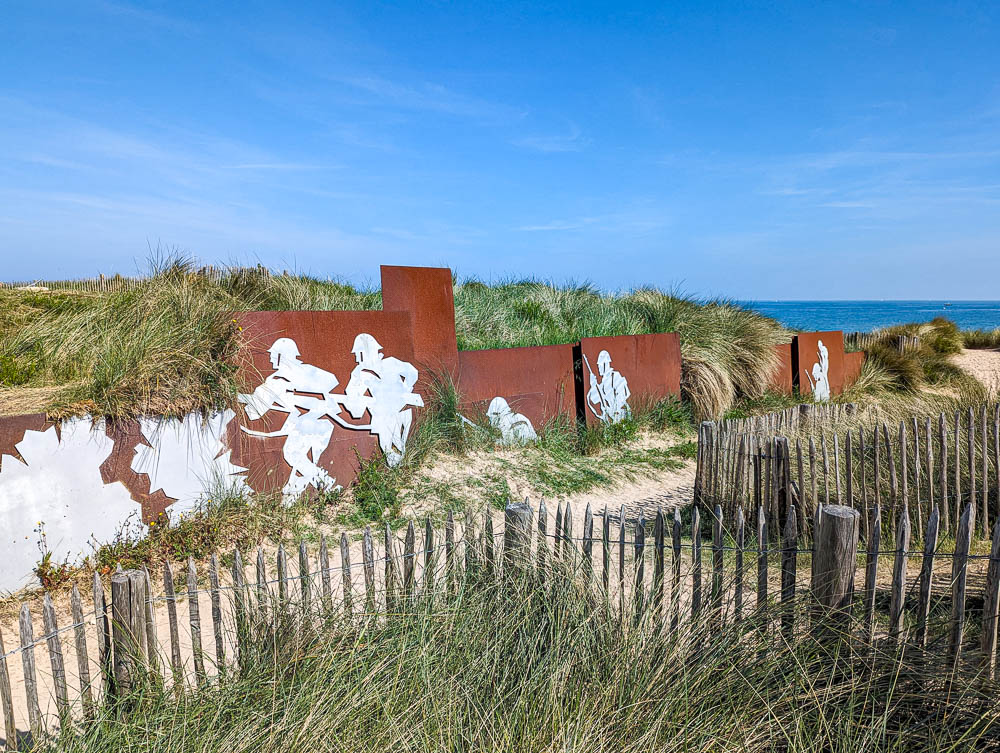
D-Day at Juno Beach: What happened?
In addition to the German armies, the landing troops at Juno Beach faced another opponent—the natural offshore reefs. Hindered by these obstacles, troops landing on Juno Beach fought their way ashore later than planned and thus incurred heavy losses in the first wave.
Still, they managed to seize control of the area from the Germans by the end of the day. Here’s a quick rundown of what happened on D-Day at Juno Beach:
Juno Beach objective: The Canadian troops landing at Juno Beach had three main objectives:
- Cut the Caen-Bayeux road
- Seize the Carpiquet Airfield
- Link together the two British landing sectors at Gold and Sword
Juno Beach casualties: Of the more than 21,000 Canadian troops that landed at Juno Beach, casualty estimates are around 1,200.
Juno Beach units: The Canadian D-Day landings were the work of:
- 3rd Infantry Division
- 2nd Armoured Brigade
Juno Beach outcome: The storming of Juno Beach resulted in Allied victory and is considered (along with the landings at Utah Beach) one of the most strategically successful of the D-Day beach landings.
Though Canadian troops got a late start on their invasion, they still ended their day ahead of the American and British divisions on the four other beaches.
If you only have one day in Normandy, make the most of it–check out this post on the best D-Day sites to visit if you’re short on time and be sure to choose the right beach to visit.

What to see at Juno Beach, Normandy
The Juno Beach/Canadian sector isn’t as well-known or developed as some of the others (like Omaha Beach). As a result, you’ll find fewer museums and monuments here, but the great thing is that they’re all pretty centrally located. Regardless, if Canadian World War II history interests you, head to Juno Beach.
Along the beach you can still see the ruins of German bunkers and some of the original beach obstacles. For more interesting ways to take in Juno Beach D-Day history today, check out this great video of where to find battle scars in the Juno Beach sector. For all the best Juno Beach museums and monuments to visit while you’re there, check out these 21+ sites.
Also check out: 10 Things You Need to Know Before Visiting Normandy’s D-Day Sites
What to see at Juno Beach: Map
This map contains all the Juno Beach sites I talk about in this post. To save this map: Click on the star ⭑ next to the map’s title to save in your Google Maps. To use this map: When you get to Normandy, open Google Maps on your phone, click “Saved” at the bottom, then click “Maps.”
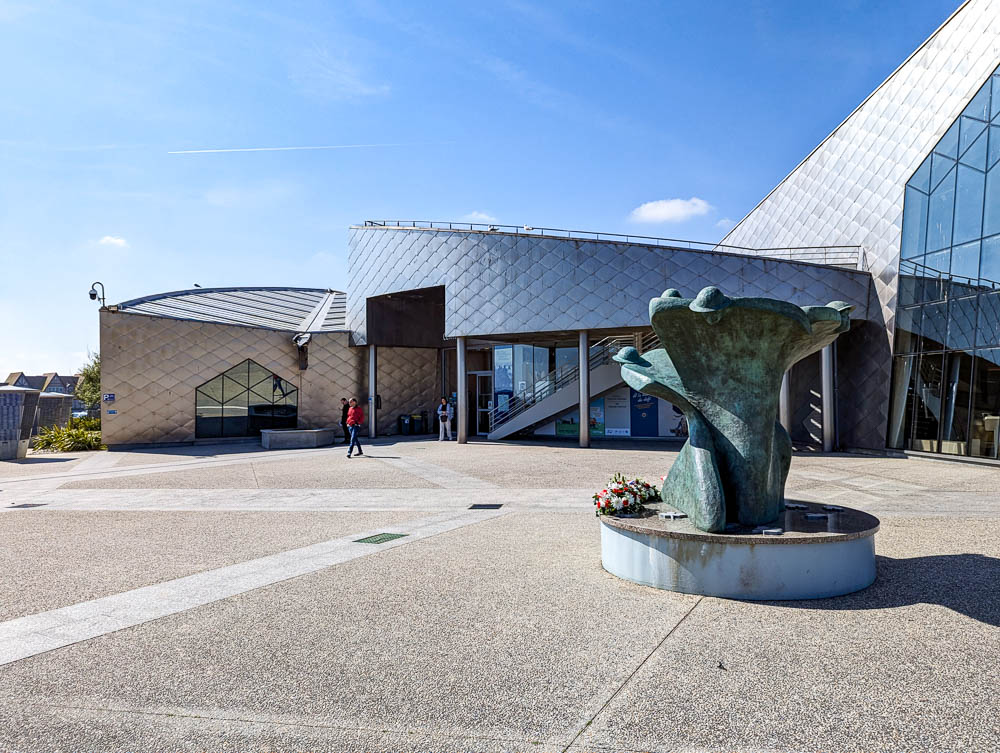
1. Juno Beach Center
The Juno Beach Center is Normandy’s only museum solely dedicated to Canadian contributions to the D-Day invasions. Located in Courseulles-sur-Mer, you can find it just off the beach itself.
The museum covers the actions of Canadian troops on D-Day but it doesn’t stop there. The Juno Beach Center also covers Canada’s contribution to the whole of World War II, Canadian values and cultures, and insight into what life was like in Canada at this time.
The museum utilizes historical artifacts and information, powerful films, as well as interactive exhibits. You can even ride a simulated amphibious landing craft onto Juno Beach to get a feeling of what Canadian troops experienced on the morning of June 6th, 1944.
Don’t miss the many memorials that surround the building like the Commemorative bricks to the left of the entrance and the “Remembrance and Renewal” sculpture to the right.
Pro tip: The parking lot here fills up really fast but you can park for free just a short walk away either next to the beach or in the lot a little further down on Avenue du Général de Gaulle.
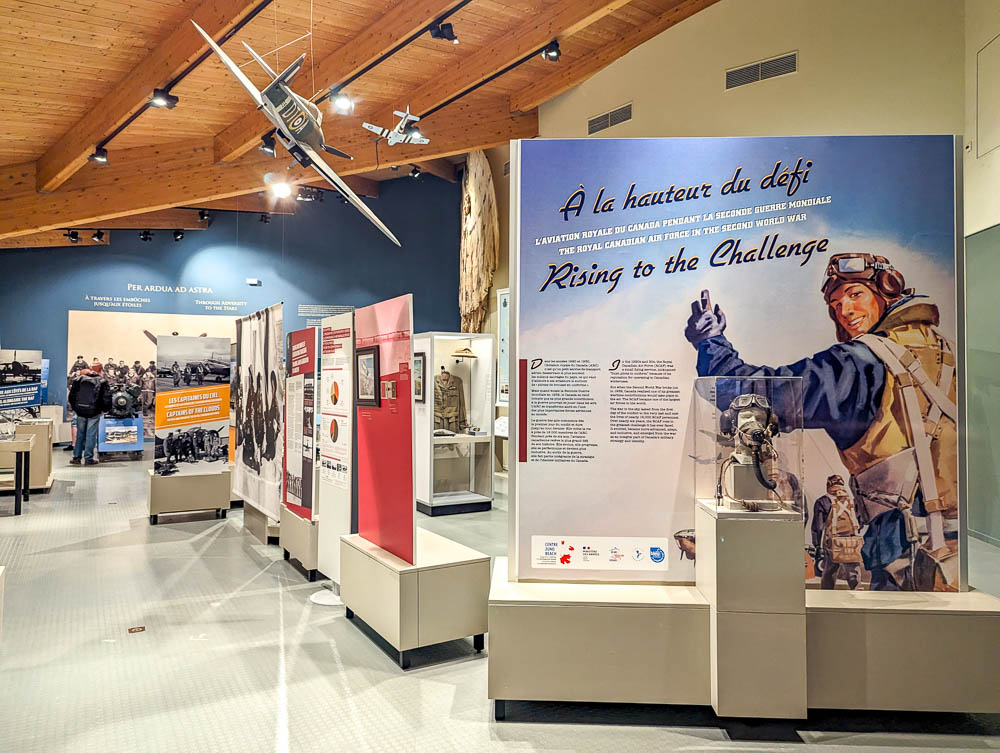
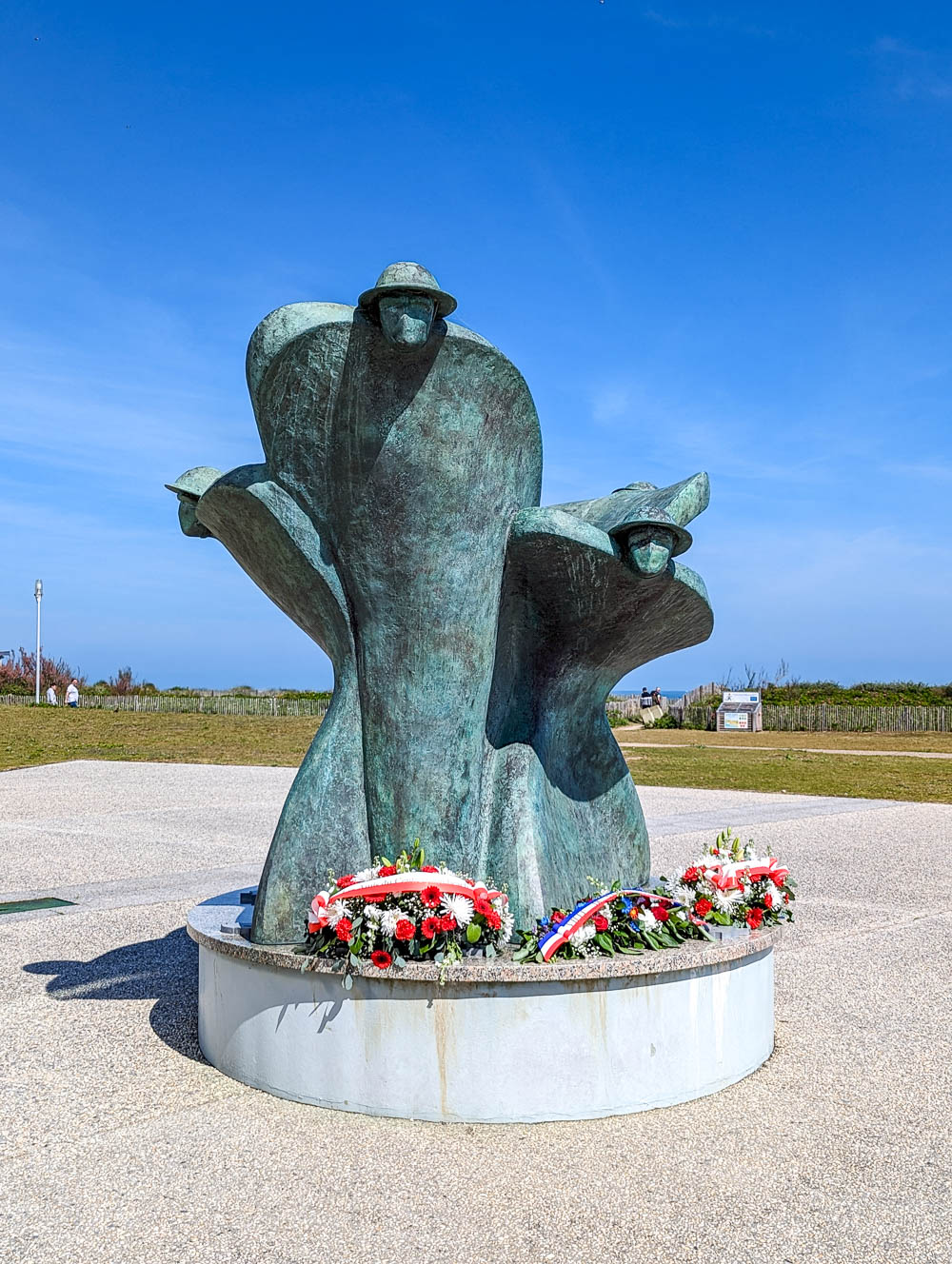
Also check out: What you need to know about driving in Normandy + helpful tips (plus what you should know about Juno Beach drivers!)
2. Juno Beach Park
The grounds around the Juno Beach Center (known as Juno Beach Park) are also full of D-Day history. In this immediate vicinity of the museum you can check out old German bunkers and other remains of the Atlantic Wall, beach obstacles, memorials, informative displays, and more. Not to mention, you’re right there on Juno Beach itself.
3. German bunkers at Juno Park
But the highlight of Juno Park has to be the German bunker complex. The Juno Beach Center offers 45-minute tours of both the German Command Post and the Observation Bunker. Tours can be booked in combination with your museum ticket and this is the only way you can visit this historic site. More info here.
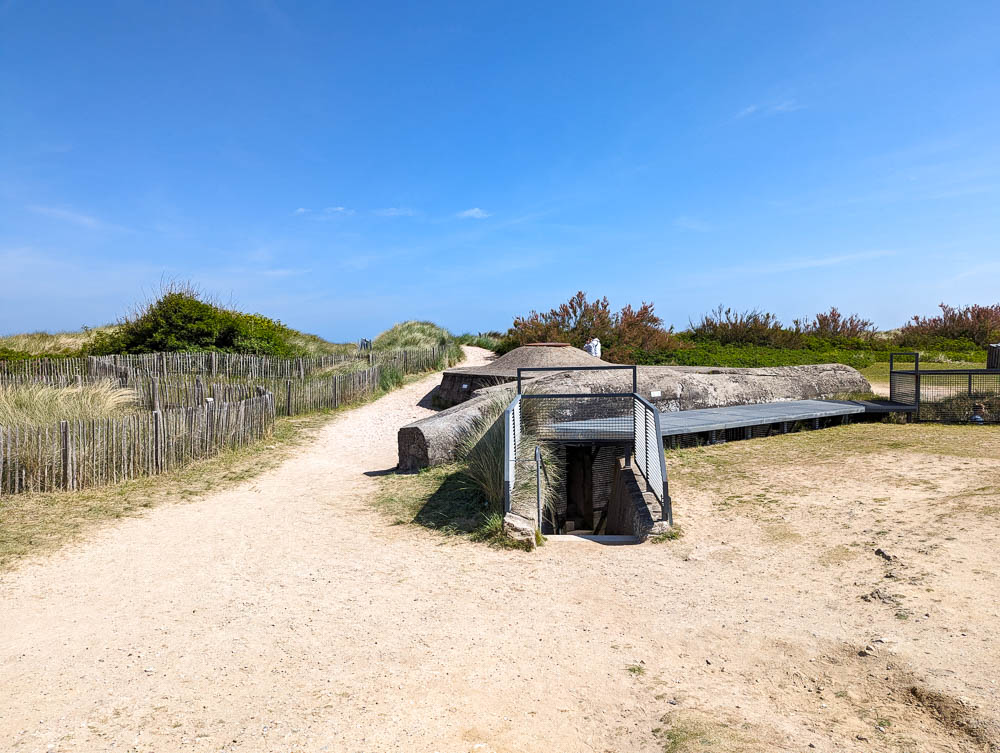
Also read: How to Spend 3 Days in Normandy – The Perfect D-Day Itinerary
4. Juno Beach Information Signs
The area of Juno Beach Park is also filled with vertical informational pillars. In both French and English these markers explain vital information surrounding the historical events of Juno Beach. You can learn about topics like:
- The Atlantic Wall and the German bunkers
- An hour-by-hour account of D-Day’s events
- The Canadian landings at Juno Beach including illustrations
- Some personal stories of the troops
- The battle order of invading Canadian forces on D-Day
- Information on different sectors within the Juno landing zone
- And much more
I didn’t take photos of all of them, but you can visit the Historical Marker Database to see the rest.
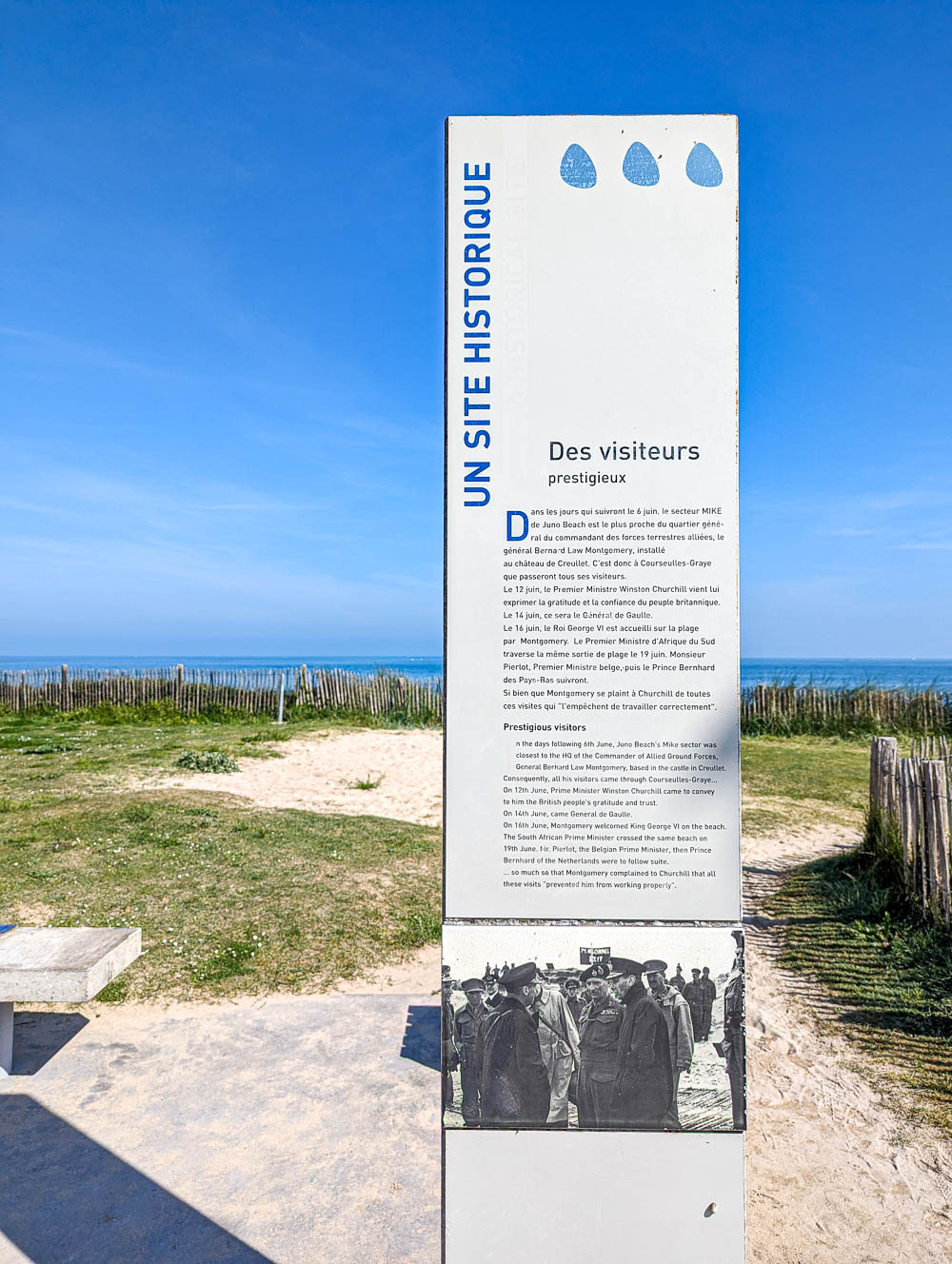
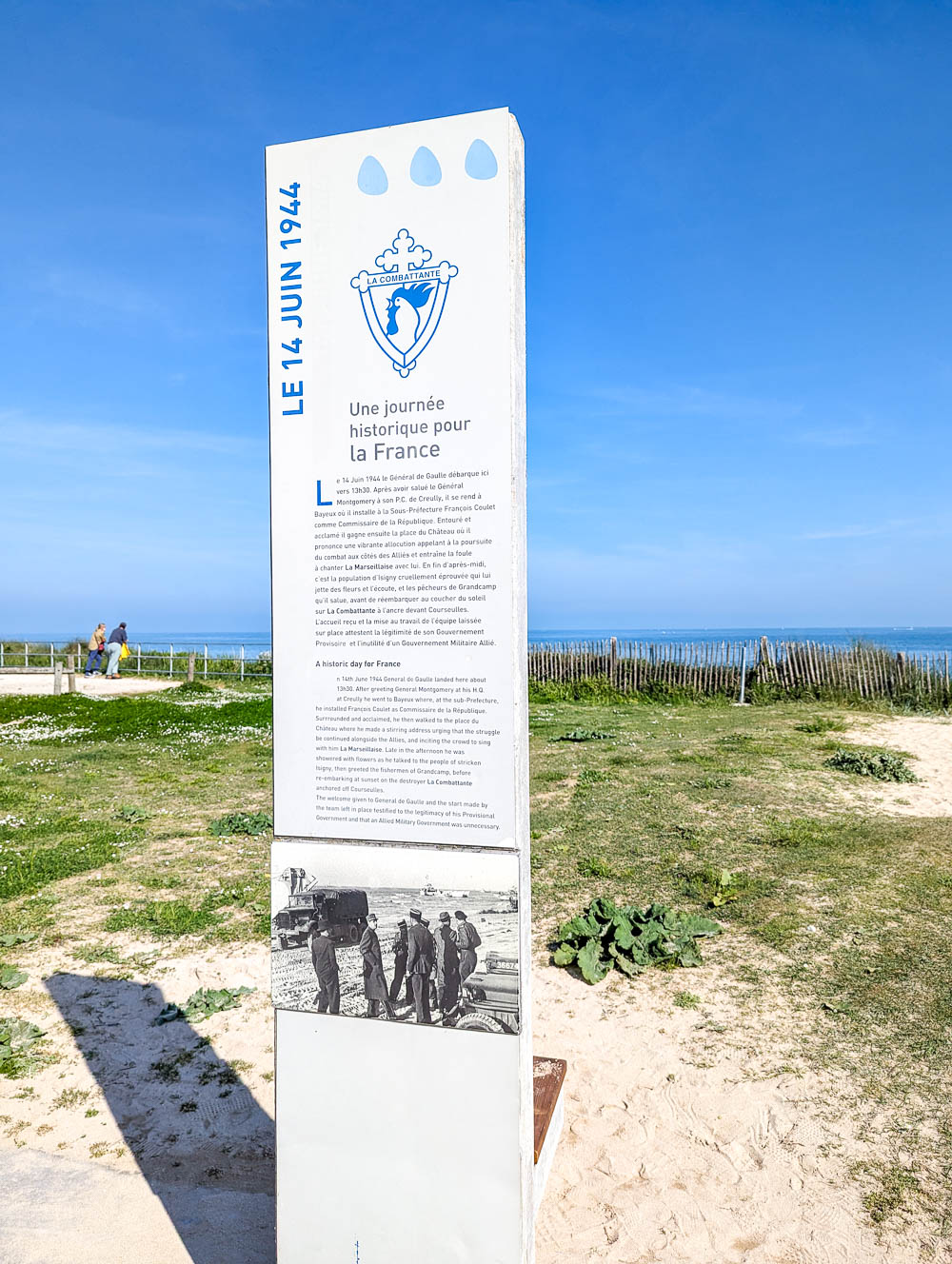
5. Juno Beach Area Memorials
In the areas near and around the Juno Beach Center, you’ll find a number of memorials dedicated to various Canadian fighting forces. Here are some to look for:
6. Juno Beach Signal Monuments
Matching the more famous one on Omaha Beach, Juno Beach also has a couple of signal monuments. One is over near the Lorraine Cross and the other is in front of the Canada House. Both of them read (in both French and English): “Here on the 6th June 1944 Europe was liberated by the heroism of the Allied forces.”
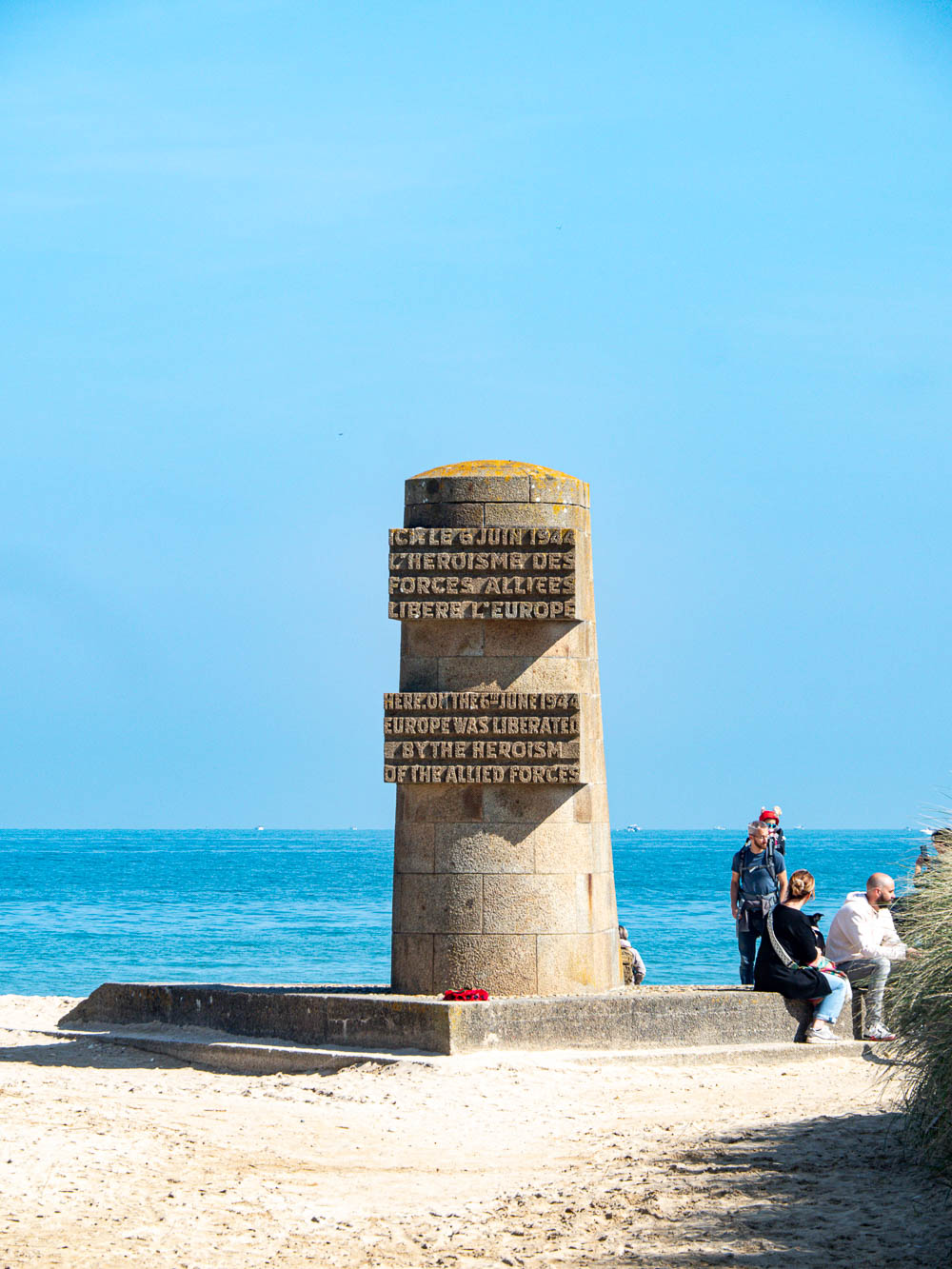
7. Royal Canadian Navy Memorial
Dedicated in 2009, the Royal Canadian Navy Memorial honors “all those who died or disappeared while serving in the Royal Canadian Navy during the conflict of 1939-1945 and in Operation Overlord June 1944. Thank you.”
8. 4th Light Anti-Aircraft Regiment Memorial
This unique memorial consists of a 40-mm Bofors anti-aircraft gun with a memorial plaque dedicated to “the memory of the men of the 4th Light Anti-Aircraft Artillery Regiment who landed at Courseulles-sur-Mer late in the afternoon of June 6, 1944 to provide air defense to Canadian troops who had starting fighting for the liberation of Europe from Juno Beach.”
The memorial markers also detail some more interesting information surrounding the events. More info here.
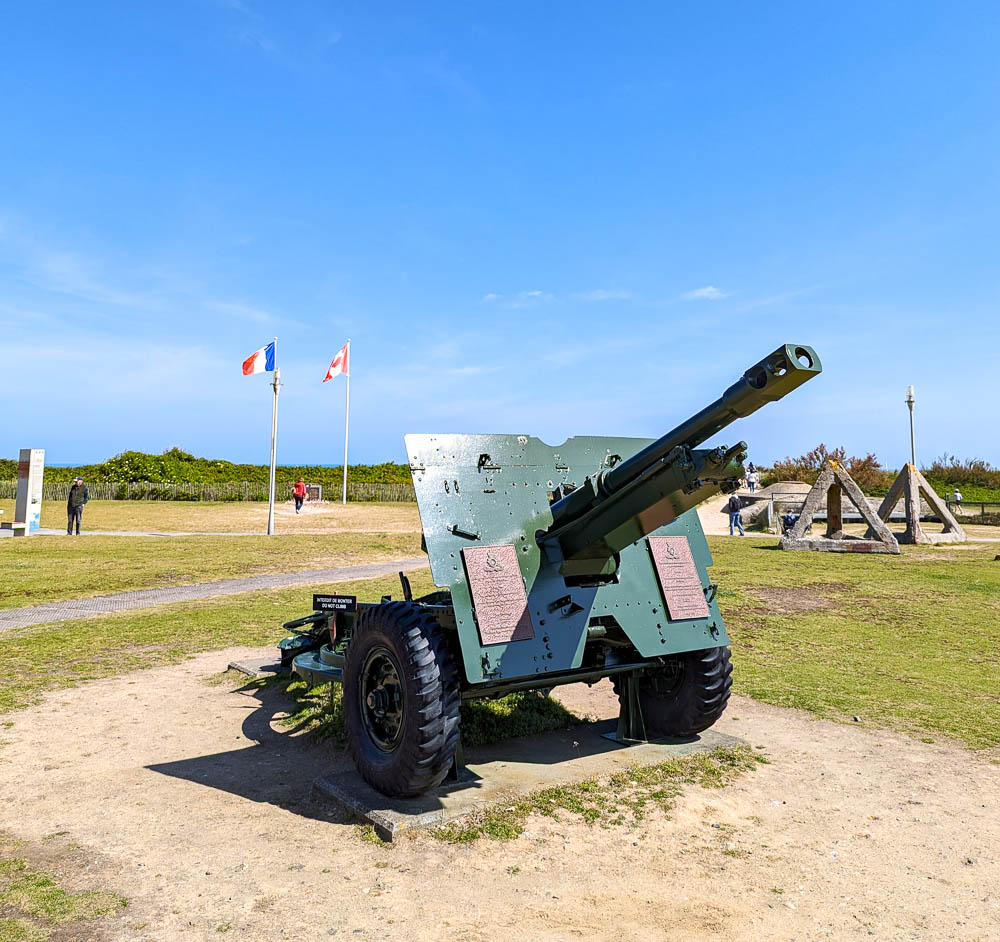
9. Memorial to Canadian Gunners
Next to the Bofors gun is another gun memorial—this time a 25 Pounder Mark II Quick Firing Field Gun dedicated to “the memory of the Canadian artillerymen who from there on June 6, 1944 began the fight to liberate France and to pay homage to those fallen in action who sacrificed everything for freedom.”
10. Churchill A.V.R.E. tank and memorial
Along the walking path over near the Lorraine Cross you’ll come to a Char Churchill A.V.R.E. tank that now serves as a memorial. The plaques reads:
26 Assault Squadron Royal Engineers
7 Canadian Infantry BrigadeThis tank landed on Graye-sur-Mer Beach at H-Hour on D-Day and was stopped on its way inland 100 meters south of this spot. The members of its crew were killed or badly wounded. It remains as a memorial to all those who gave their lives here.
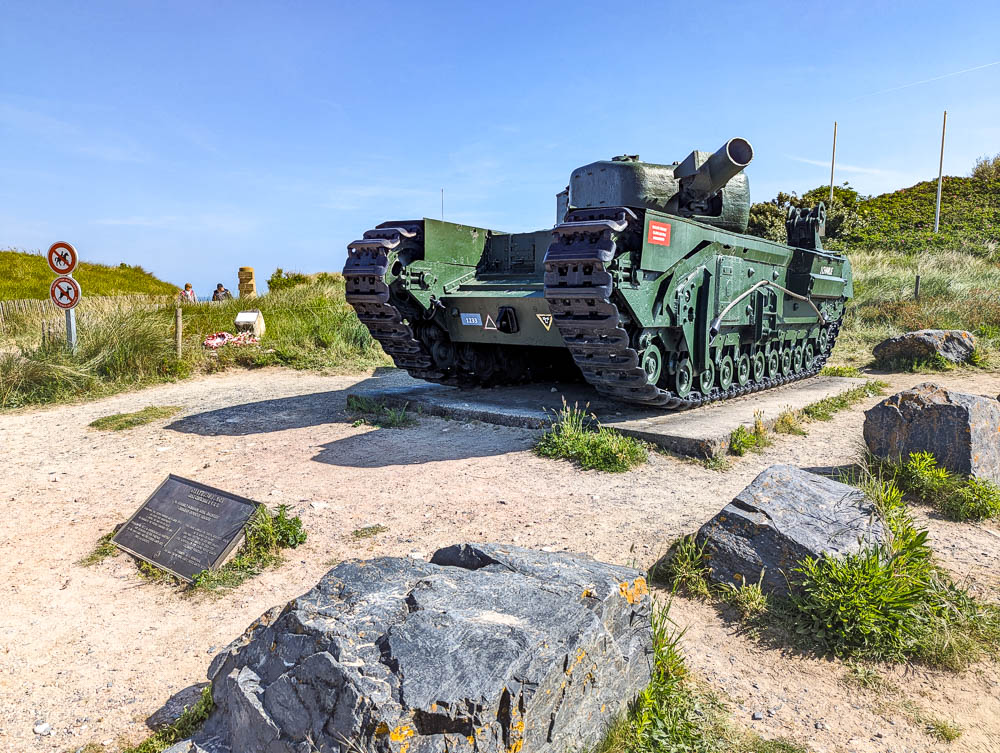
11. Monument to Polish Soldiers
Between the Churchill tank and the Lorraine Cross, along the same path, is the Monument to the 1st Polish Armored Division. The memorial, carved into black stone, reads (in French and Polish):
“On the beaches of Arromanches and Graye/Courseulles, at the end of July 1944, landed 16,000 soldiers and 400 tanks of the 1st Polish Armored Division led by General Stanisław Maczek. For our freedom and yours.”
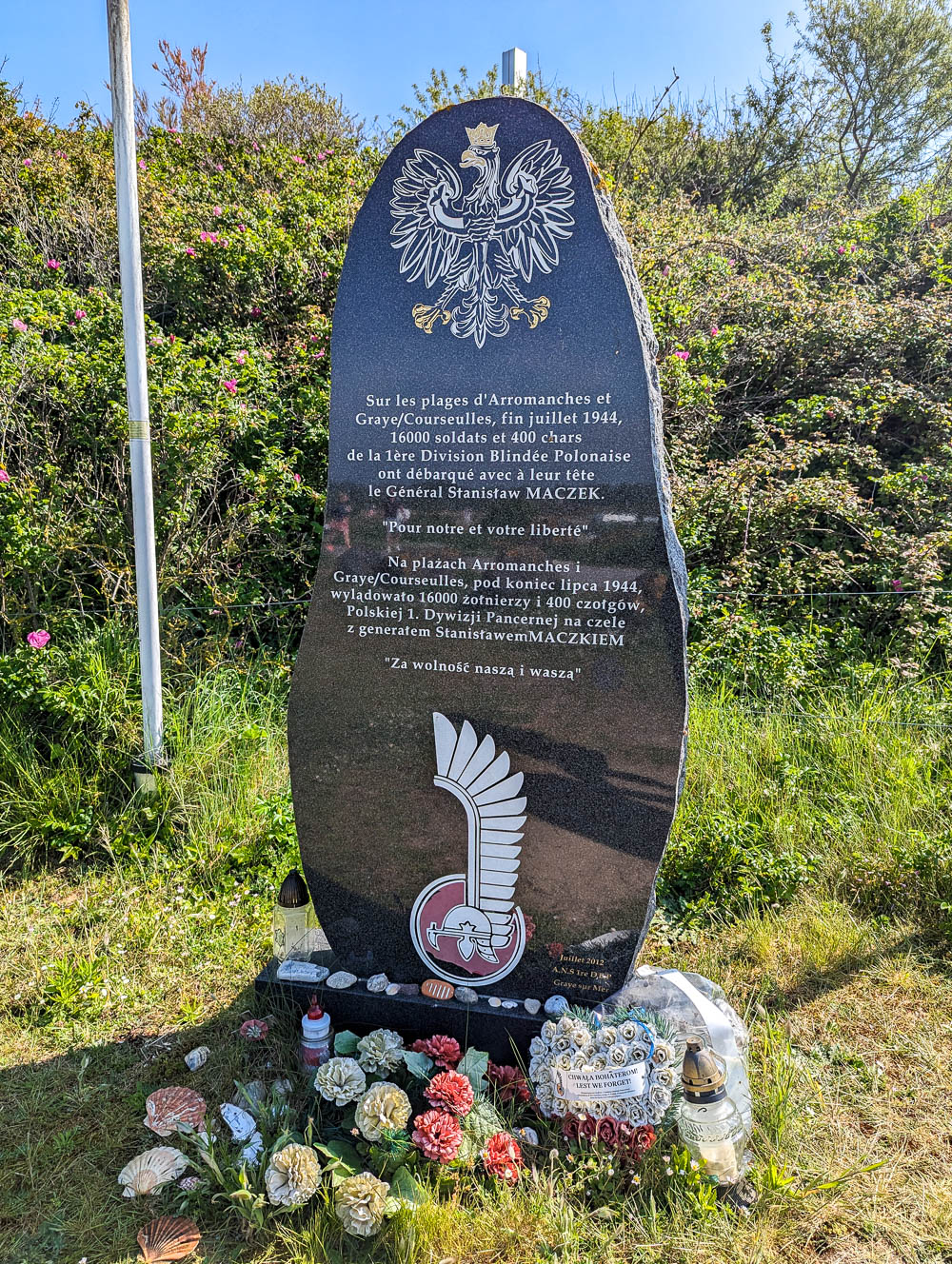
12. Memorial to the Canadian Infantry
Directly across from the Polish memorial is a dirt path that leads down to the large parking area. At the end of that path you’ll find the Royal Winnipeg Rifles and Canadian Scottish Regiments Memorial. It reads, in French and English:
“This stands as a tribute to the soldiers of the Canadian Infantry (Royal Winnipeg Rifles and Canadian Scottish) who suffered heavy casualties on the beach of Graye-sur-Mer (Mike Green and Mike Red) before they liberated this village with the help of the other Allied forces.”
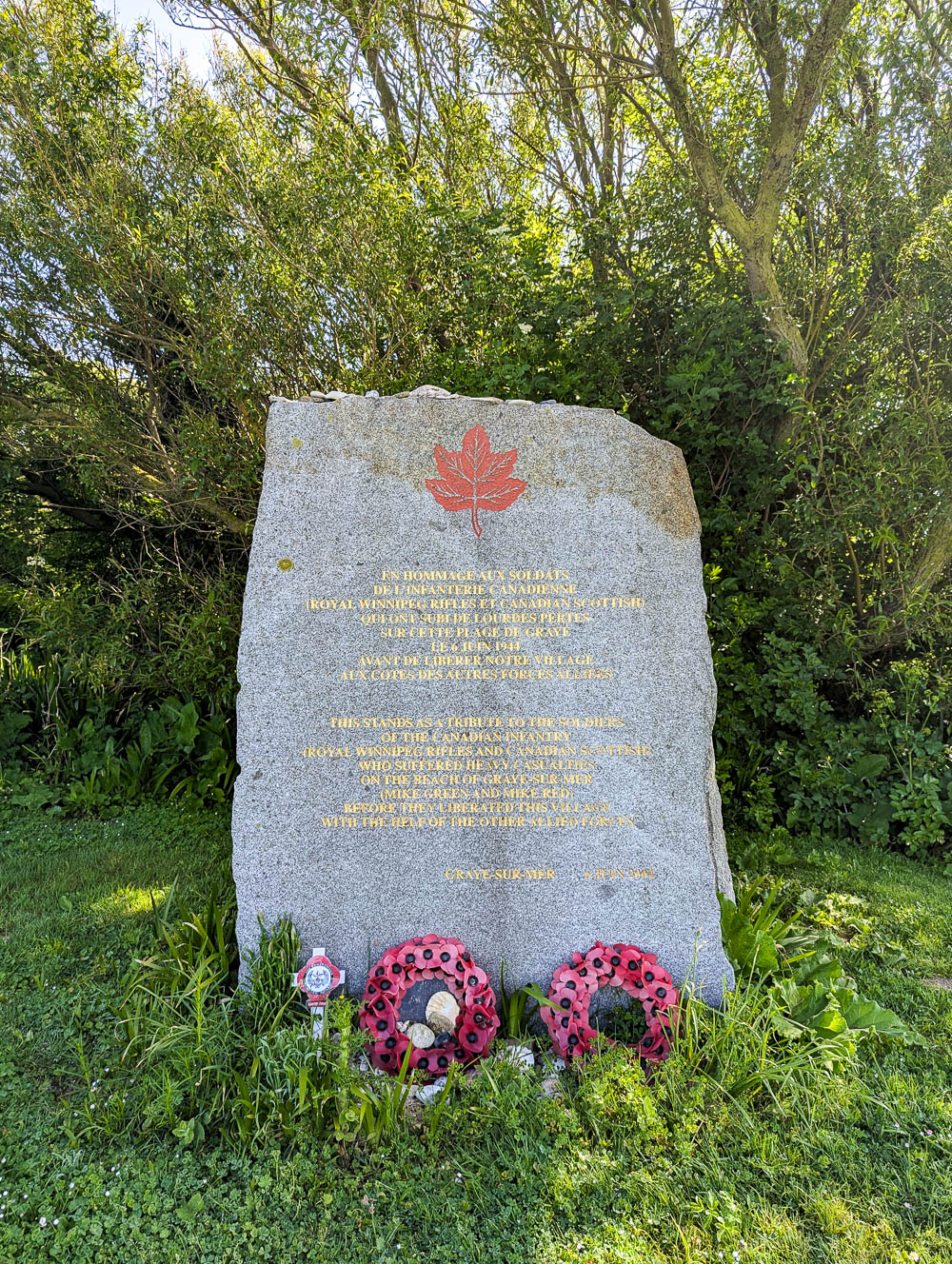
13. The Cross of Lorraine
The Cross of Lorraine monument honors French General Charles de Gaulle. It stands at the site where he first set foot on French soil (ok, sand) for the first time since his exile four years prior.
You really can’t miss the giant shining Lorraine Cross – it’s just off the beach, just a 6-minute walk from the Juno Beach Center.
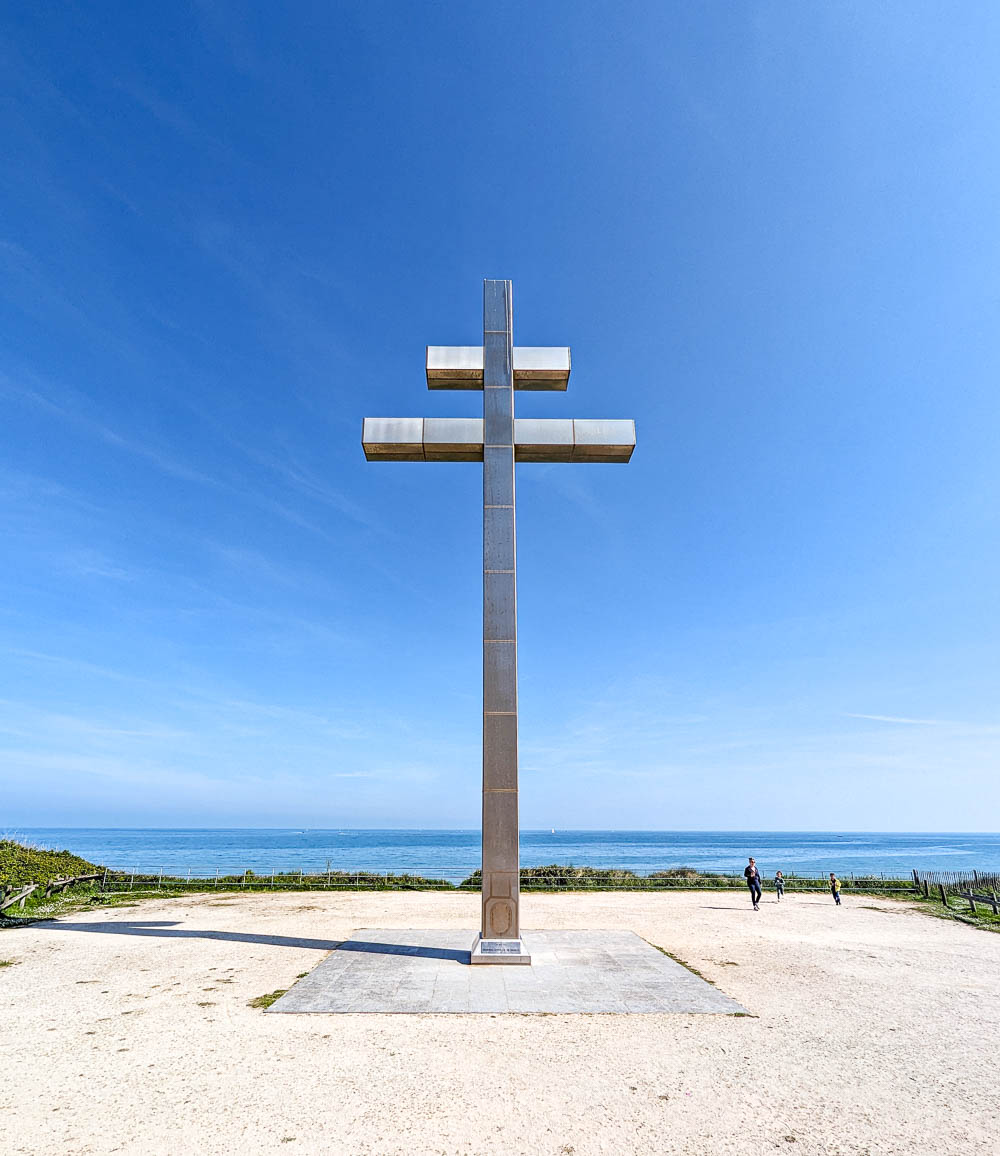
14. Metal Artistic Tribute
On your way to Juno Park you’ll likely pass the metal artwork installation that leads to Juno Beach. This rust red and white artwork is nestled in between the tall beach grass and the Cosy Battery. It shows German soldiers on the left, defending their positions, and Canadian troops on the right, storming the beach.
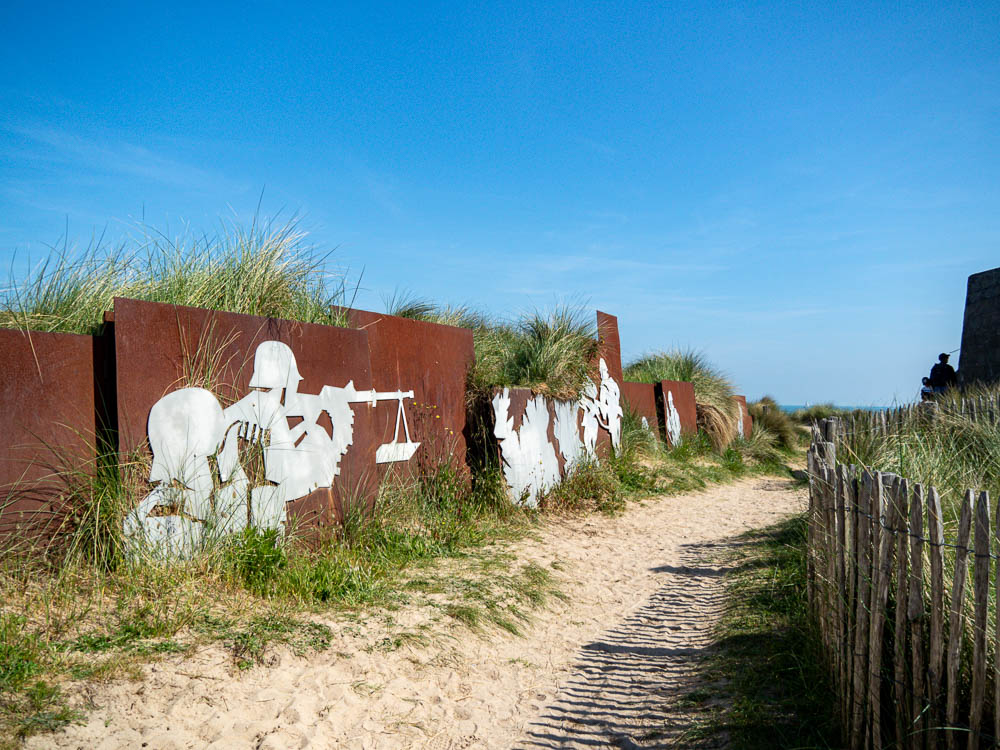
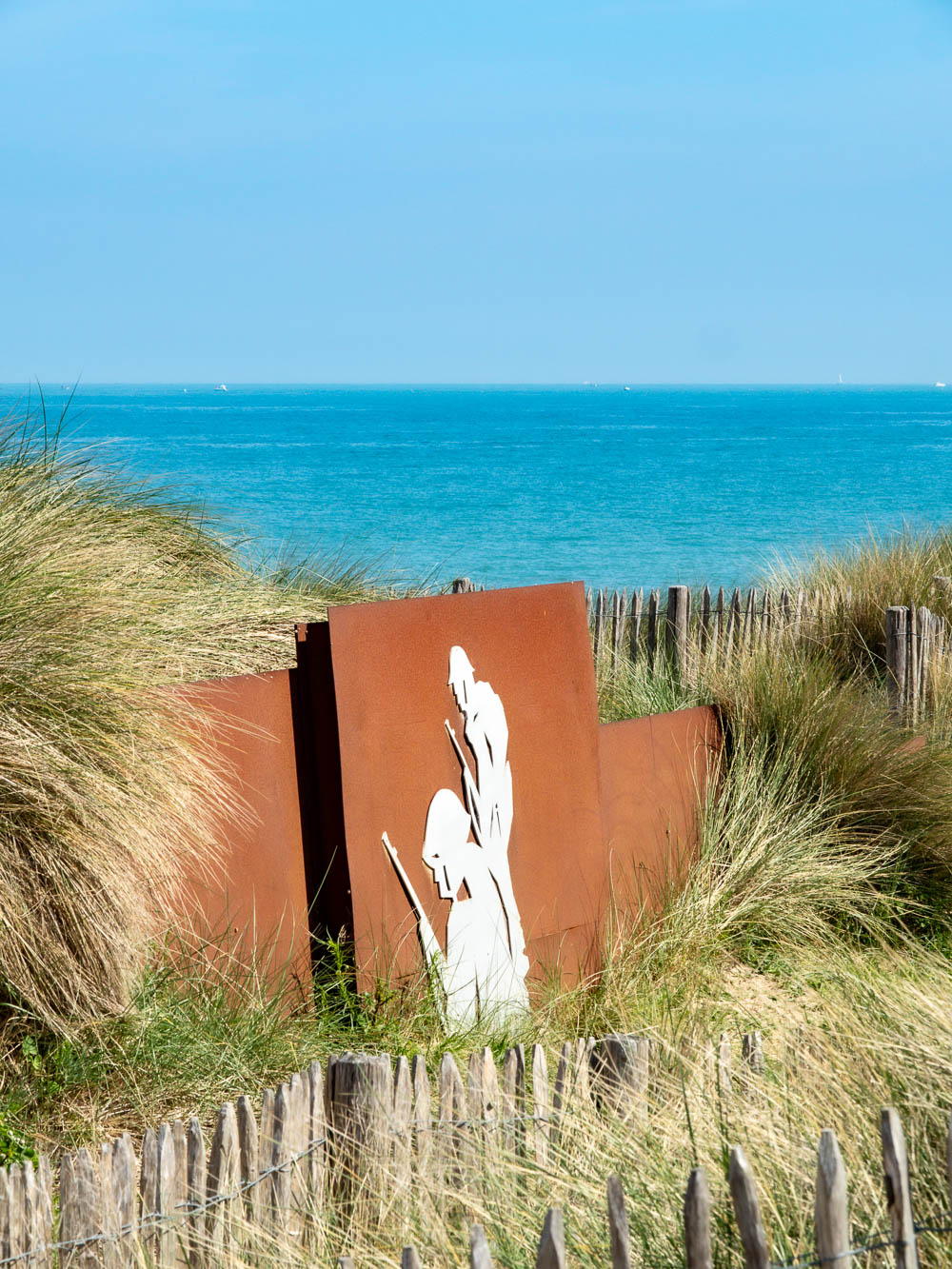
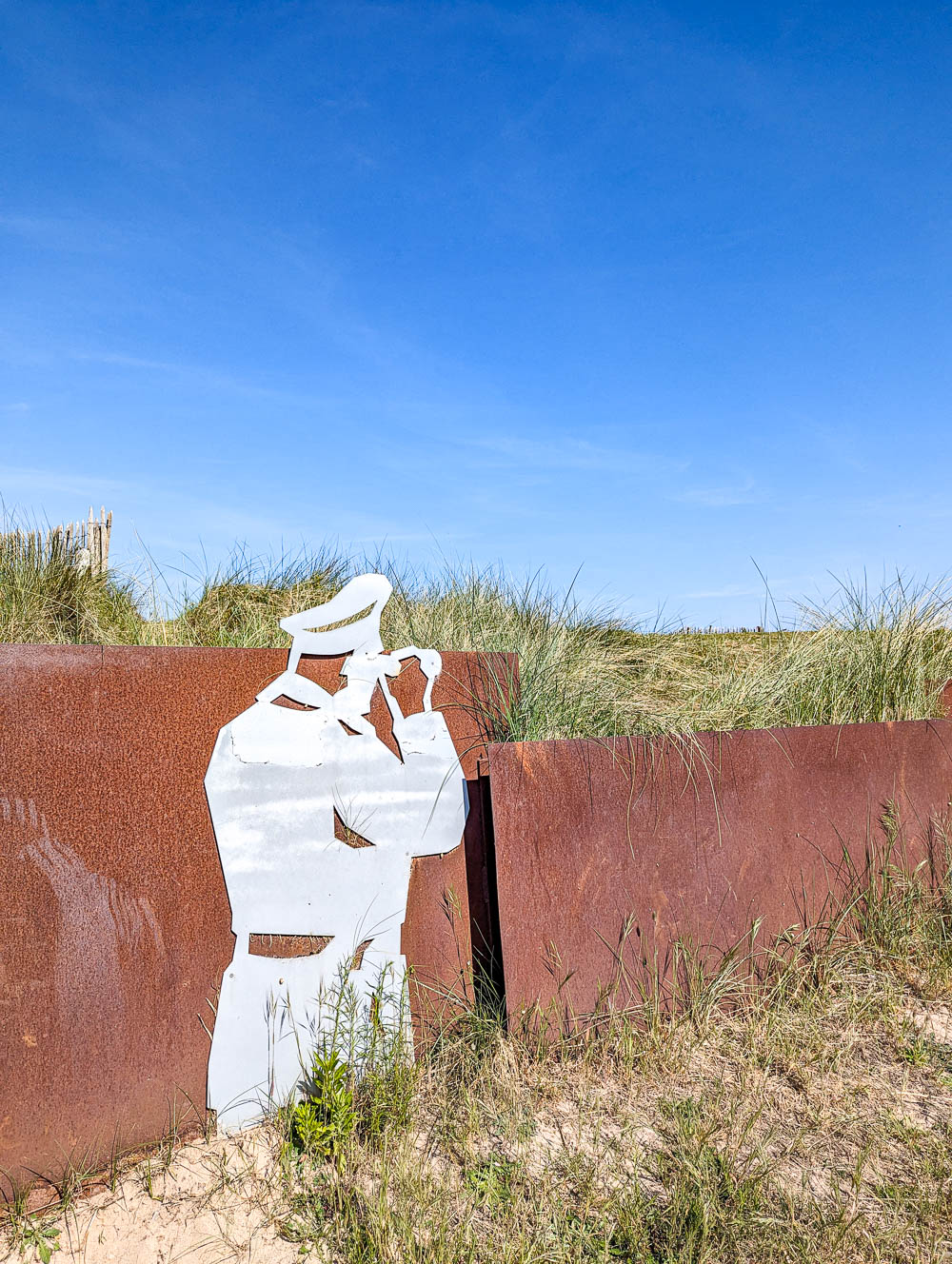
15. 1944 Radar Museum
Located just a few miles from the beach itself in the town of Douvres-la-Délivrande is the 1944 Radar Museum, located at the spot of the area’s German radar station.
This was one of Germany’s most crucial air defense systems along the Atlantic Wall. It consisted of five radar systems designed to identify enemy aircraft course, speed, and elevation, then direct this information to intercepting Luftwaffe fighters.
Having been nearly kept intact since 1944, you can visit this station in its original state. You’ll explore two refurbished bunkers and learn all about the station’s history, its use during the Battle of Normandy, and what like was like for the soldiers who manned it.
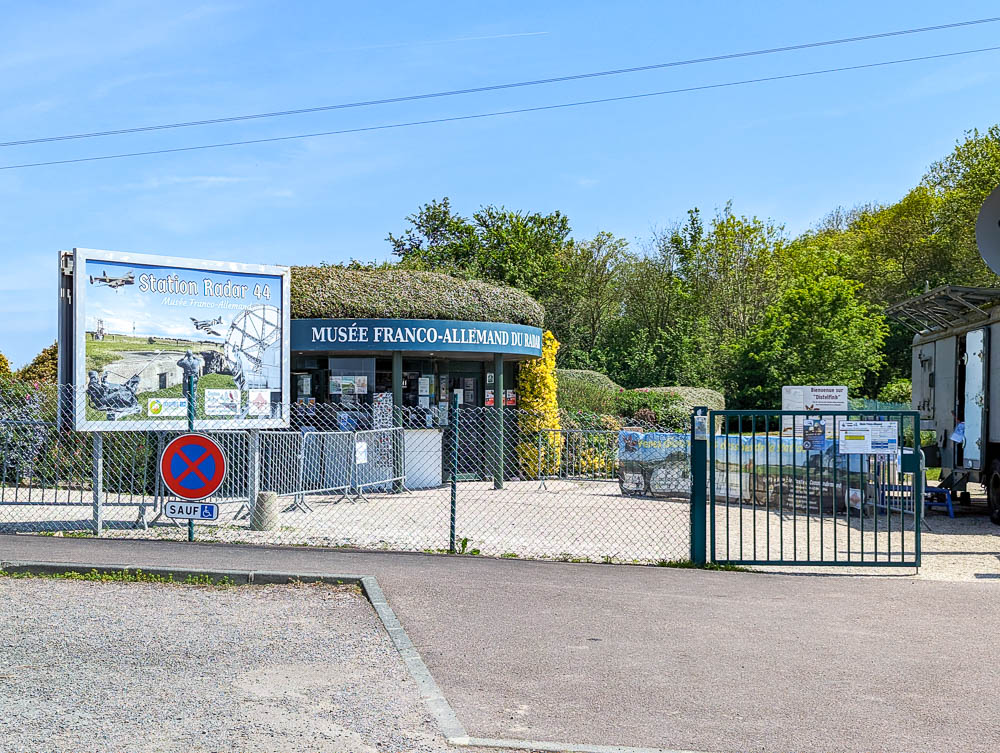
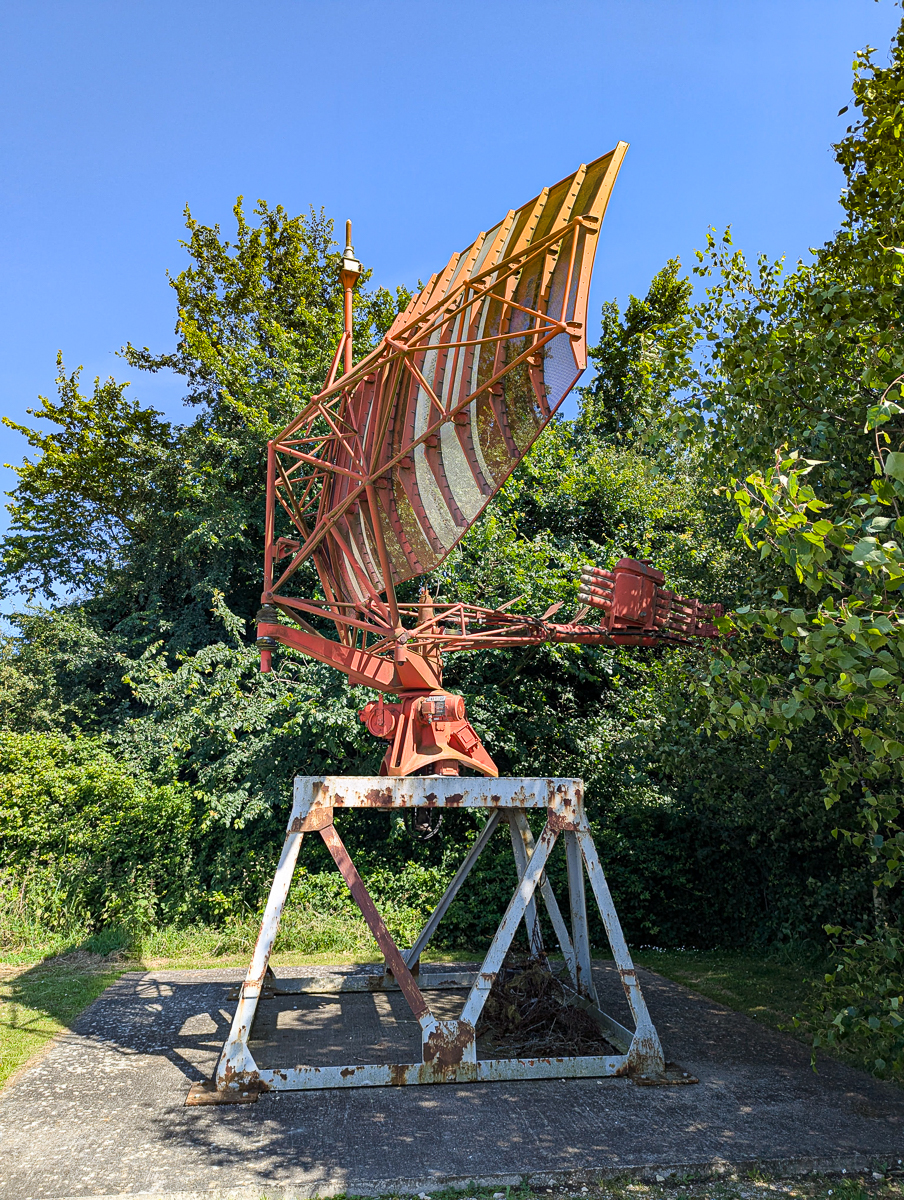

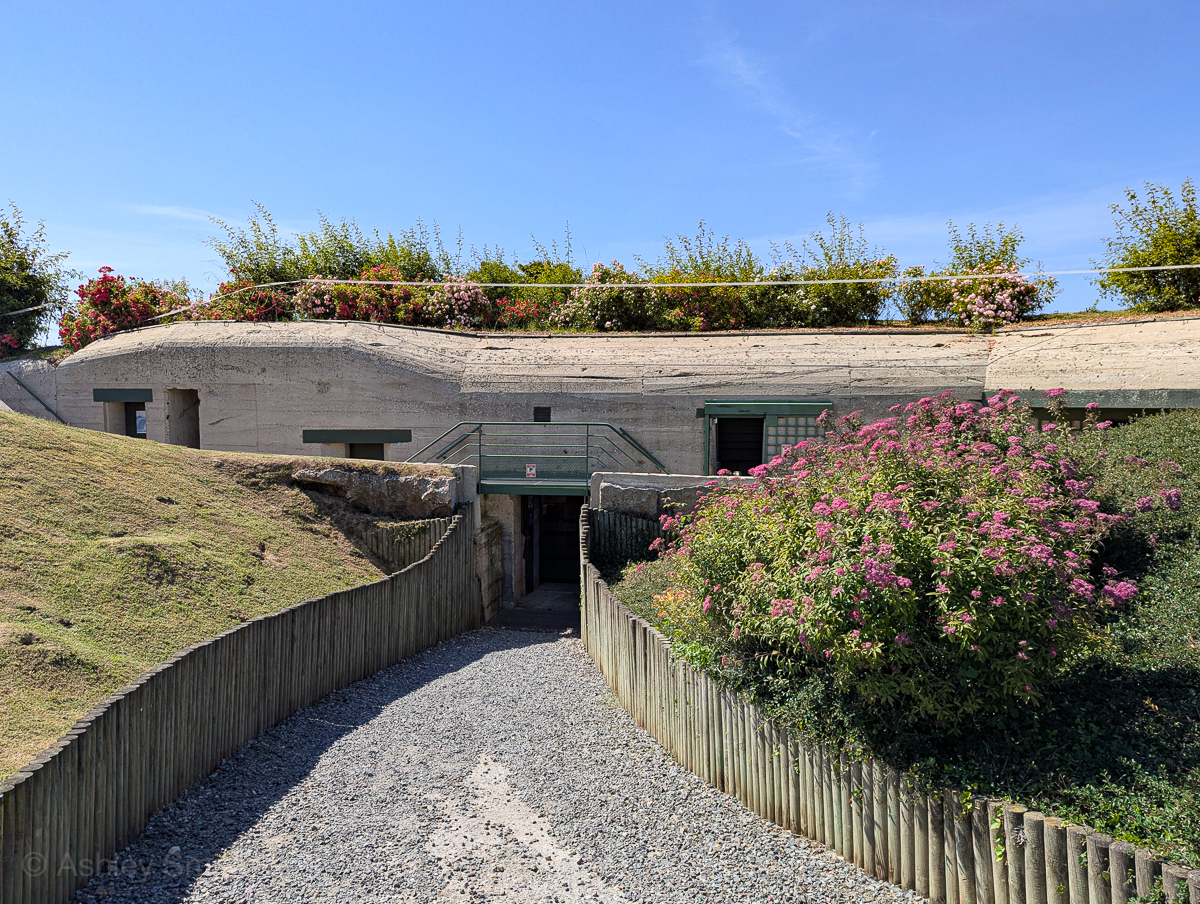
16. Canada House
One of the most popular D-Day sites in the Juno Beach area is actually a private home known as Canada House. It was the first home liberated by Canadian troops following their beach landings when it was taken over by the The Queen’s Own Rifles of Canada army regiment.
This grand home sitting alone facing Juno Beach can be seen in many historical D-Day photos and films. Because of its large size and location, it became a sort of landmark to Canadian troops since it could be seen by every man who landed on Juno.
Since then it has become its own kind of memorial. Visitors stop by to pay their respects to the Canadian troops that contributed to the Allied victory on D-Day.
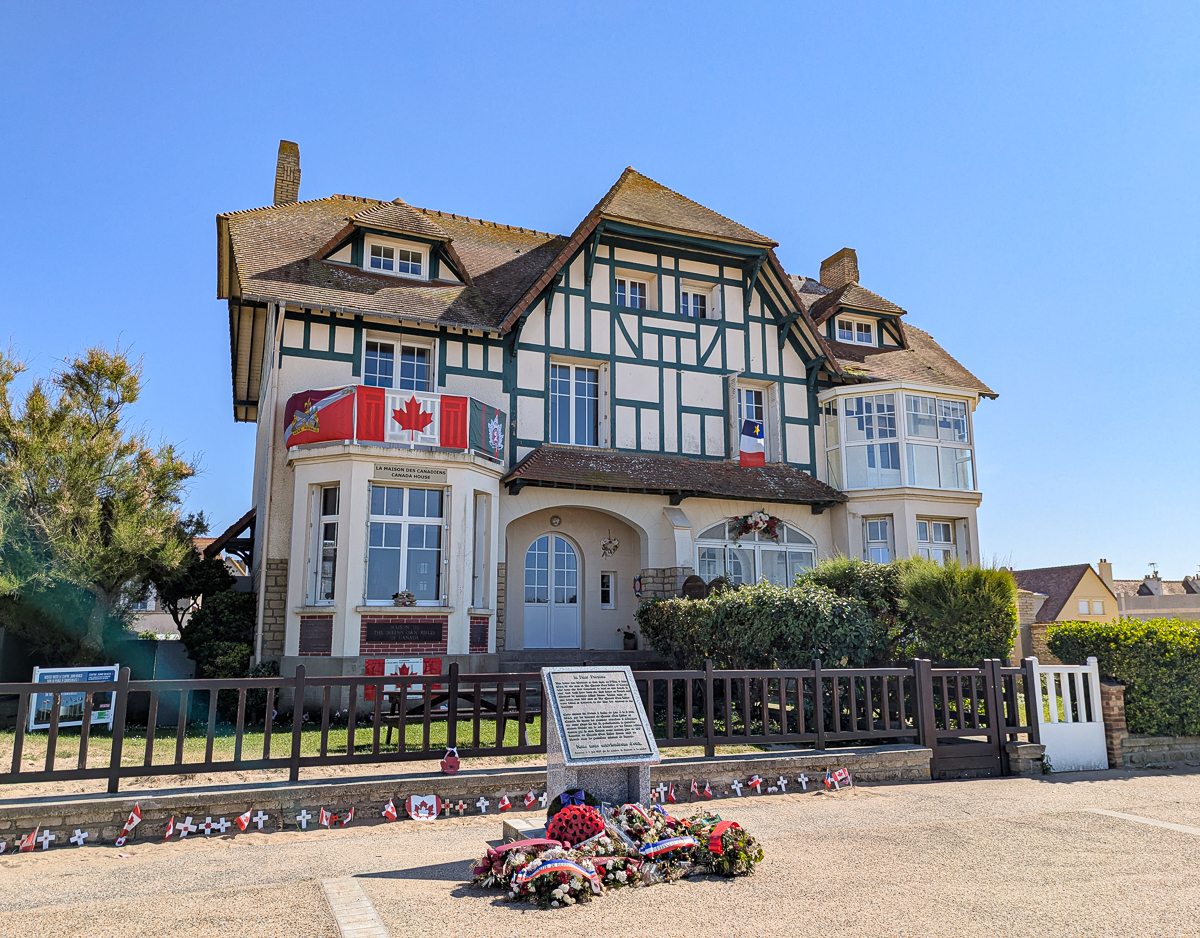
17. Inukshuk Memorial
Just around the corner from the Canada House is the Inukshuk Memorial which honors the Canadian First Nations soldiers that were killed here in Bernières-sur-Mer on D-Day.
This memorial is in the form of a traditional Inukshuk—stacked stones that form the likeness of a human being. Their intentions can be to either point someone in the right direction, warn of dangers, or mark certain sites of remembrance.
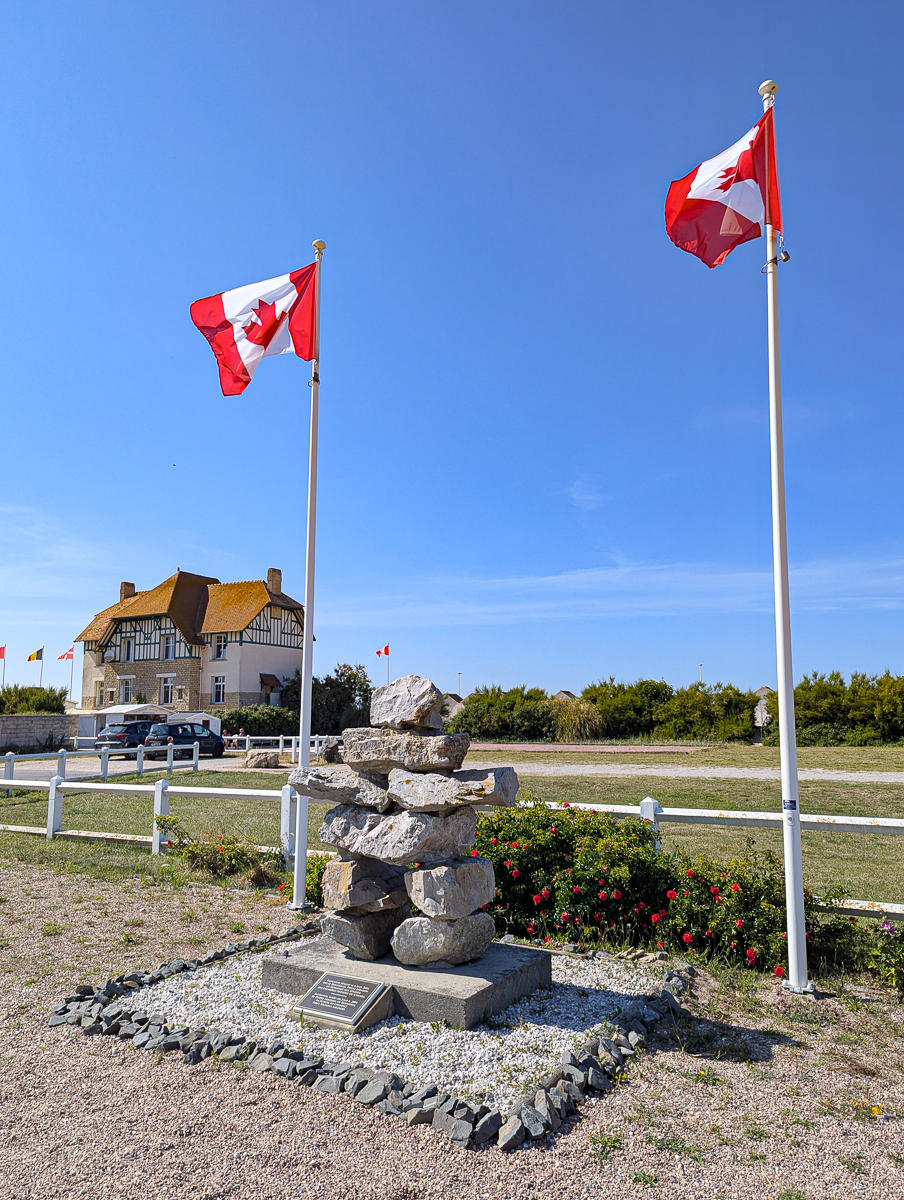
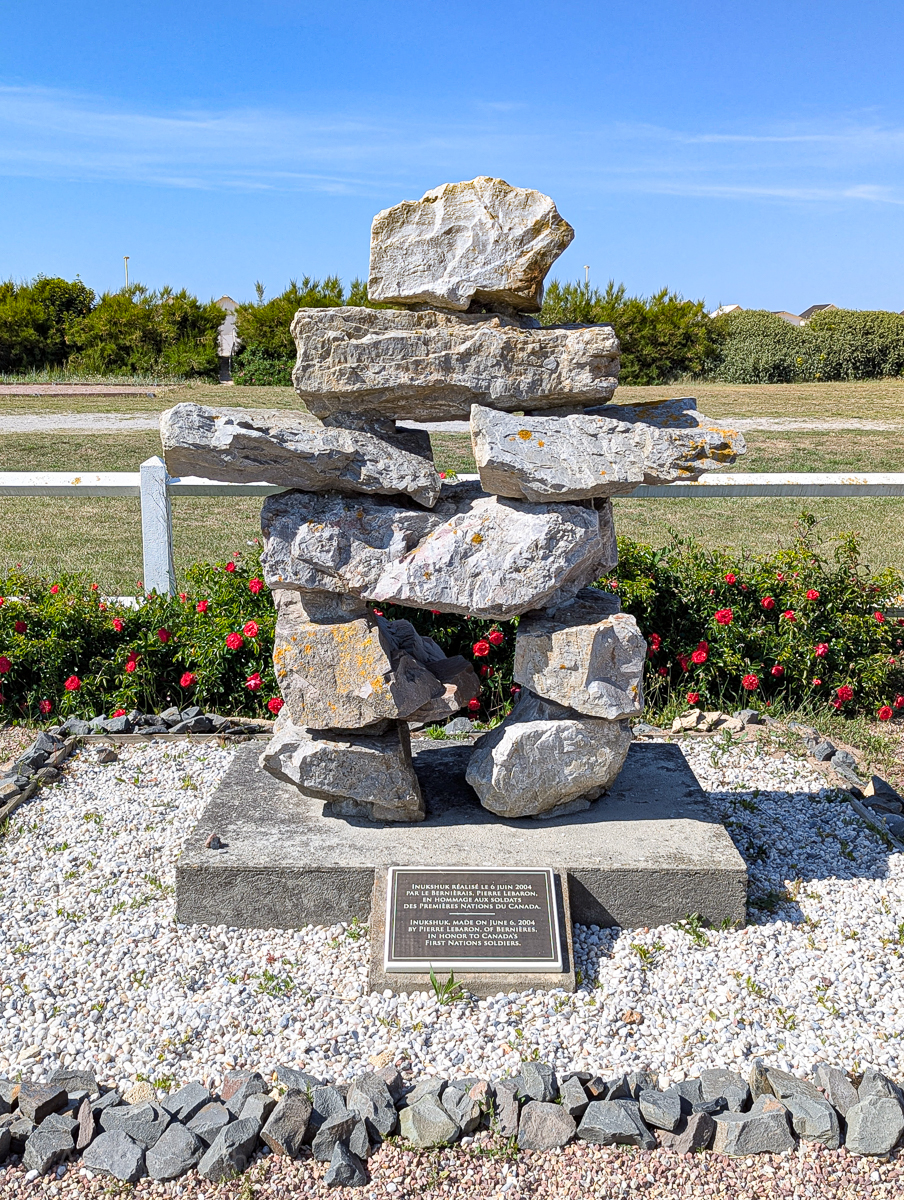
18. Canadian War Cemetery
The Canadian War Cemetery is located in the commune of Bény-sur-Mer and serves as the resting place for Canadian soldiers who lost their lives in the Battle of Normandy.
While many of the graves belong to those who died on D-Day, the vast majority of them were killed in July in the Battle for Caen, near the cemetery’s current location. As is typical of Normandy’s war cemeteries, the Canadian War Cemetery is impeccably kept and a beautiful place to pay your respects.
Pro tip: You can climb the towers on either side near the entrance to get a wide view of the whole cemetery.
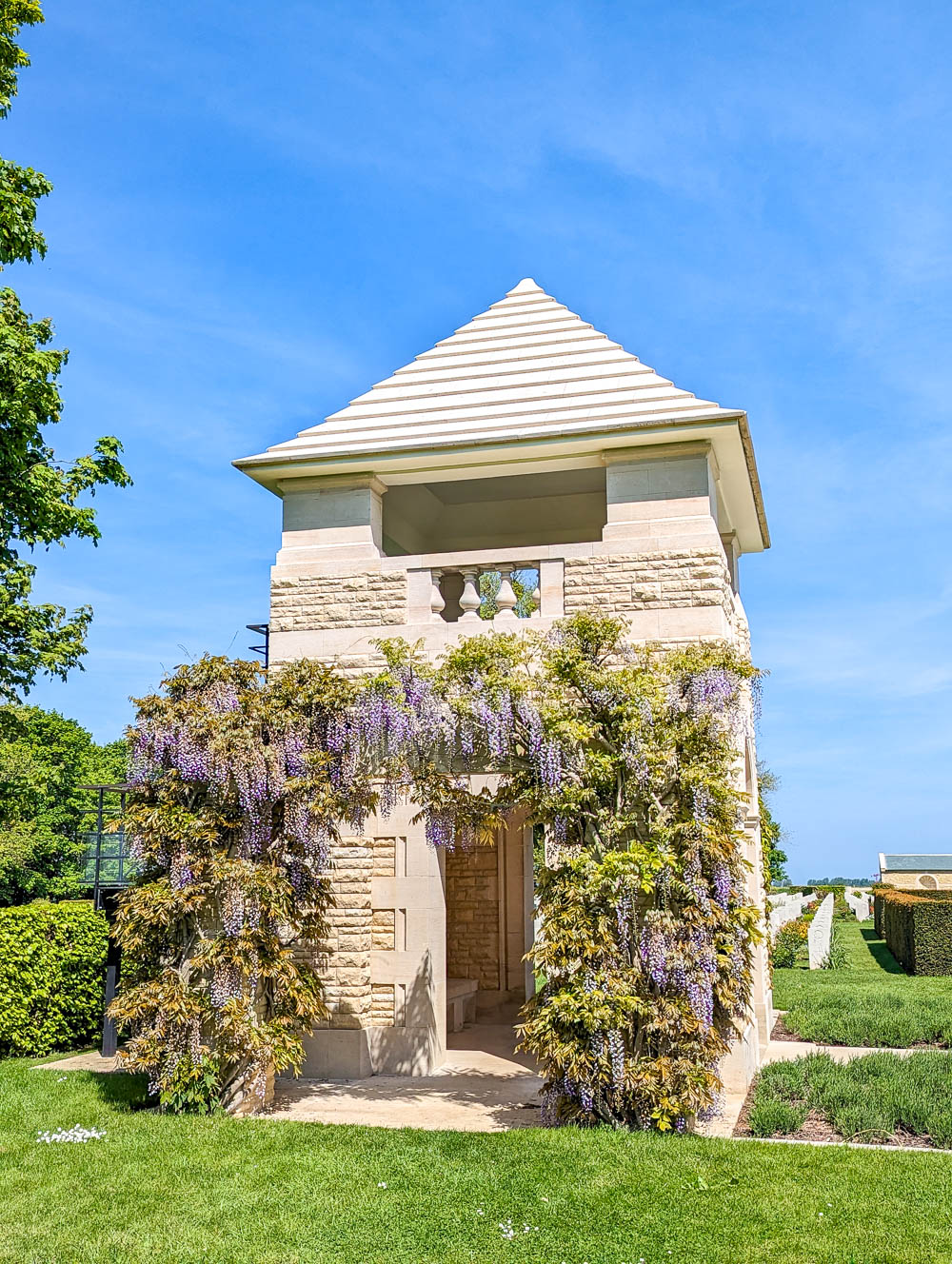
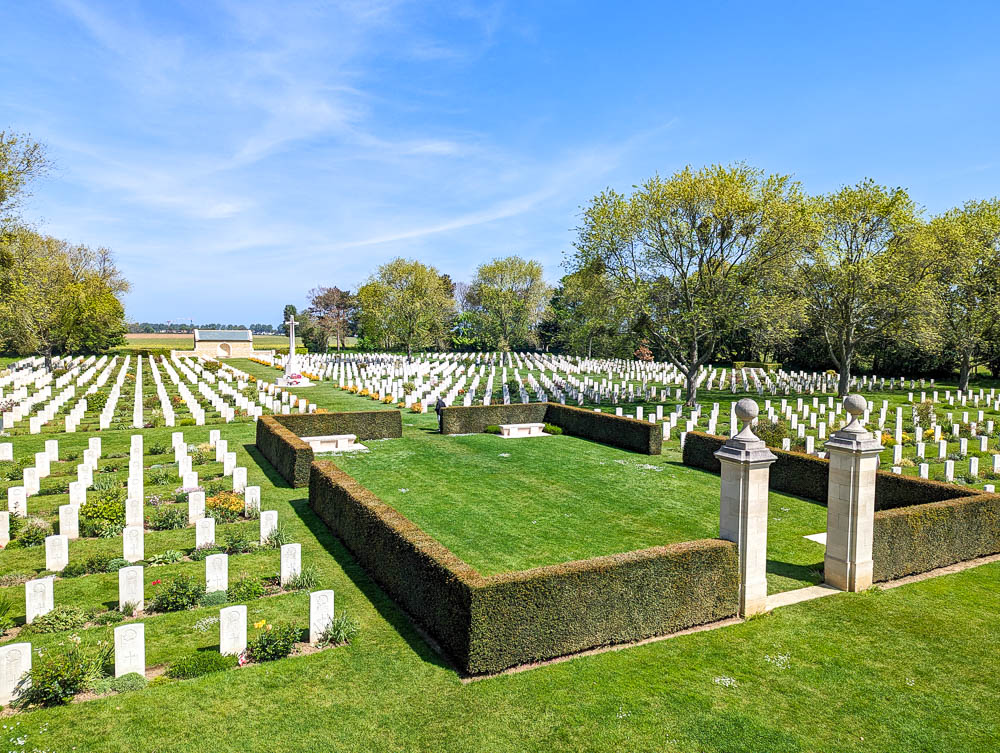
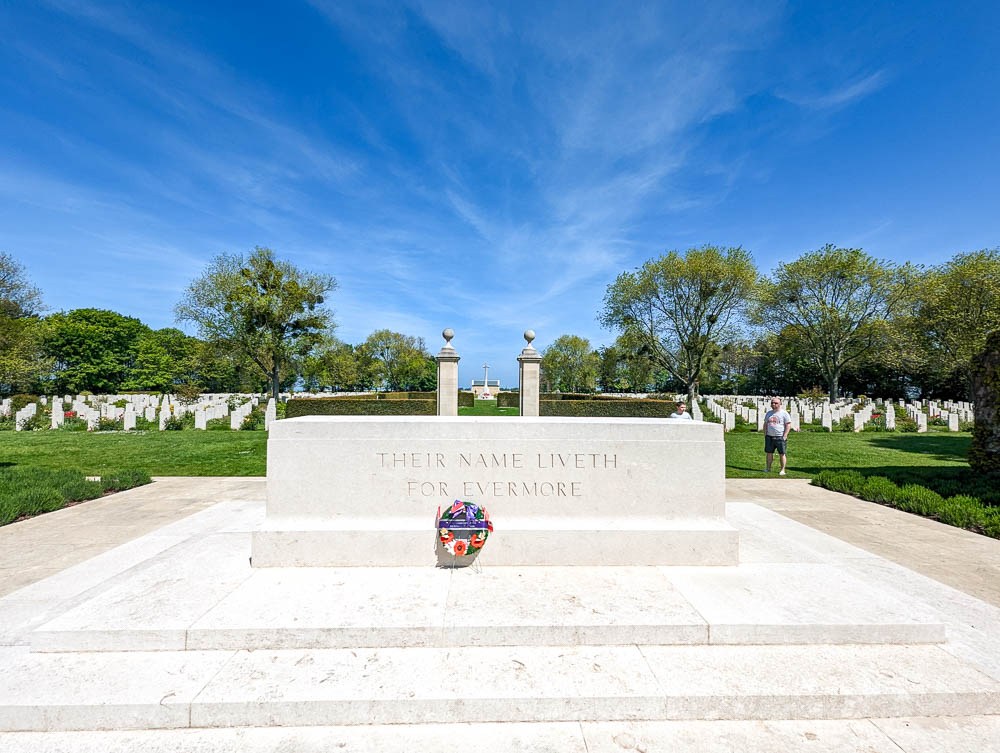
19. Miscellaneous war remnants
All around Juno Beach you can find more than just museums and memorials. The area is still full of remnants from the war, much as they were left when they were abandoned. Keep your eyes peeled while exploring this area and you’ll see war reminders everywhere. Specifically, you can look for: (see map for locations)
- WN 31 (Widerstandsnest 31)
- WN 33a (Widerstandsnest 33a) – The crumbled remains of a German bunker right on the beach that met its end in the face of a Sherman tank
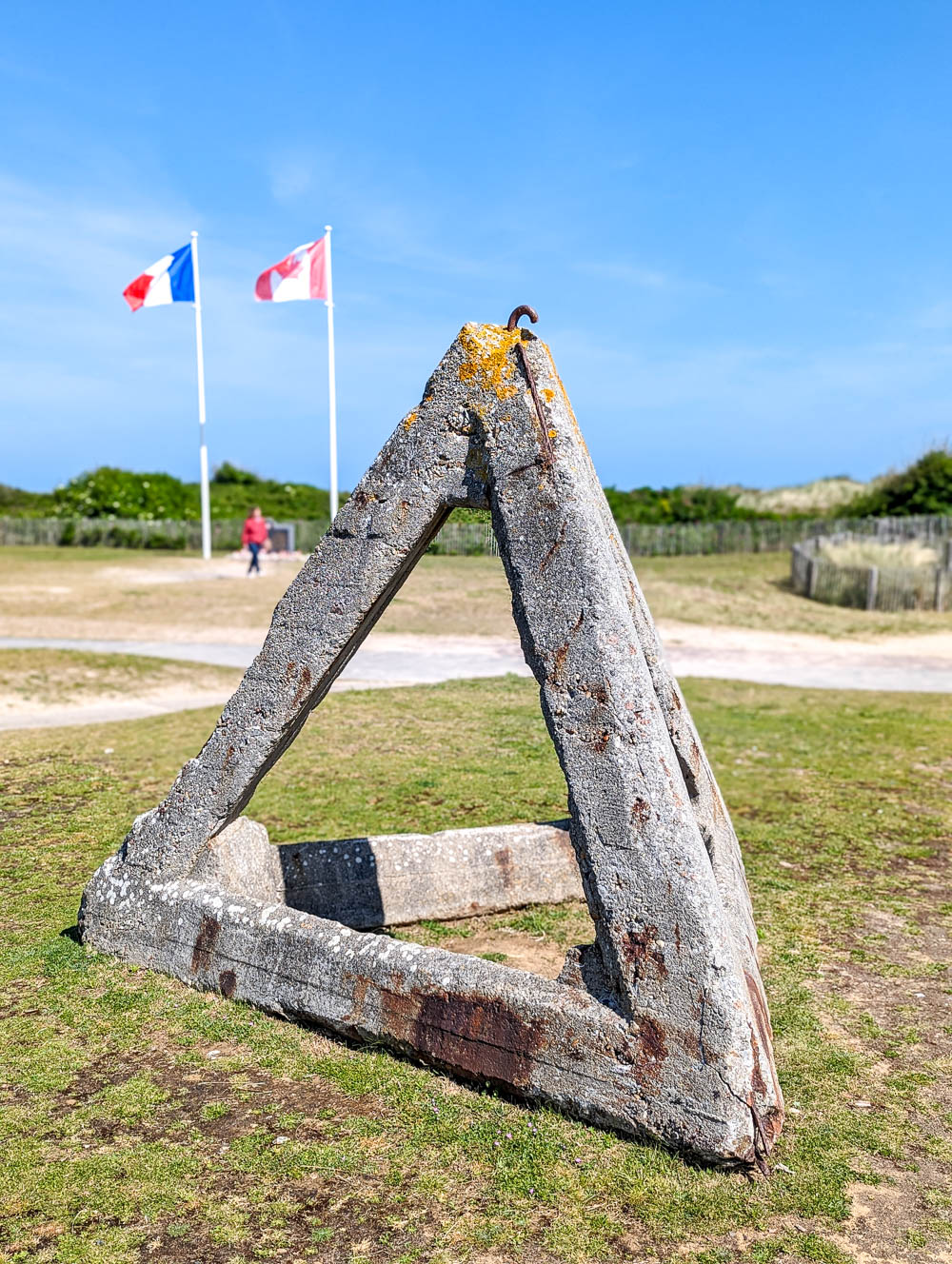
20. WN 28 (Widerstandsnest 28)
At WN 28 you’ll be able to see (and read about) several German defensive remains, including:
- Tobruks #1 and #2 – Small concrete buildings from which a soldier could shoot a machine gun 360°
- The blockhouse known as Canada Place
There are also several memorial plaques and informative displays at this site. The panels have a QR code you can scan, but I’ve already done that for you if want a head start. If you’d like to read the descriptions, head here: remembernieres.com.

21. Cosy’s Bunker
This tilted bunker is named for Lieutenant W.A. “Cosy” Aitken, of 10 Platoon “B” Company The Royal Winnipeg Rifles, who was tasked with capturing this bunker on D-Day. The full story is told on the informational sign next to it.
Visit Juno Beach Normandy
The 21 sites listed above are some of the “best” to visit in Juno Beach, Normandy, but they aren’t the complete list. All around Juno Beach you’ll find tanks and guns, various other memorials, and more (so keep your eyes peeled).
To visit Juno Beach Normandy is the best way to learn about the Canadian contributions to D-Day, the Battle of Normandy, and World War II in general. Add a visit to Juno Beach to your D-Day/Normandy trip to round out your experience.
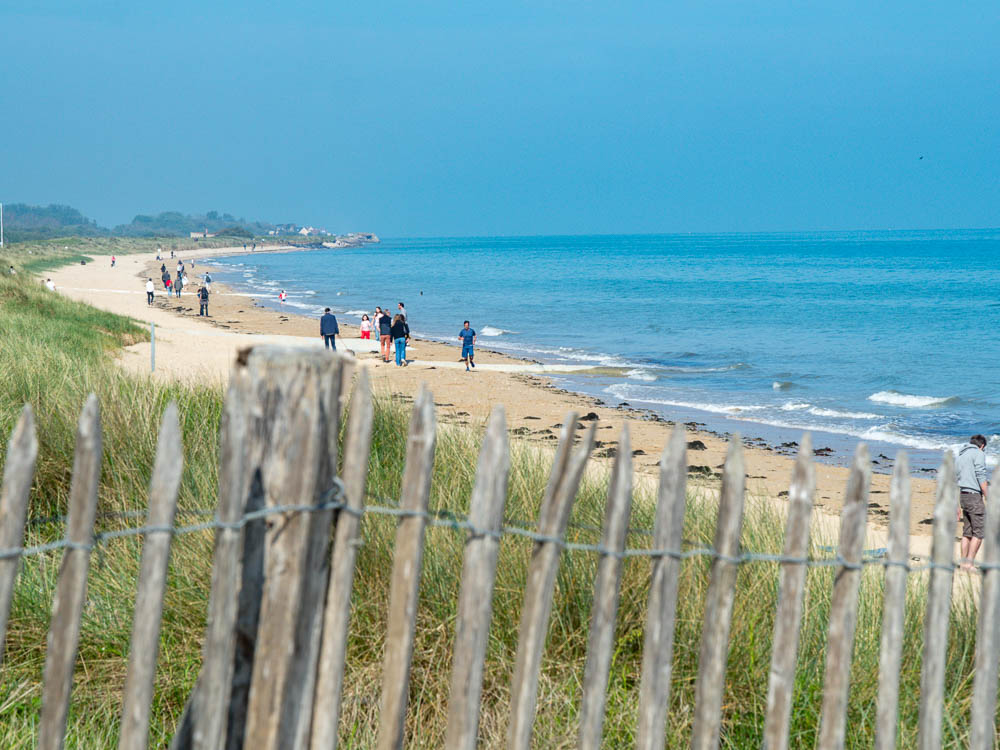
Hotels near Juno Beach Normandy
If the Juno Beach area is where you’d like to stay on your trip to the D-Day landing beaches in Normandy, start your search here with these great hotel options:
Ferme de la Rançonniére
This relaxing hotel is located on a beautiful property just two miles from the coast. This place is pure French countryside bliss. They have an on-site restaurant and a beautiful garden and terrace.
The location is perfect and the Ferme de la Rançonniére has an “Awesome” 9/10 rating. Reviewers absolutely loved their stays here. Check out the stunning pictures and read reviews in the link below.
Book your stay here: Ferme de la Rançonniére
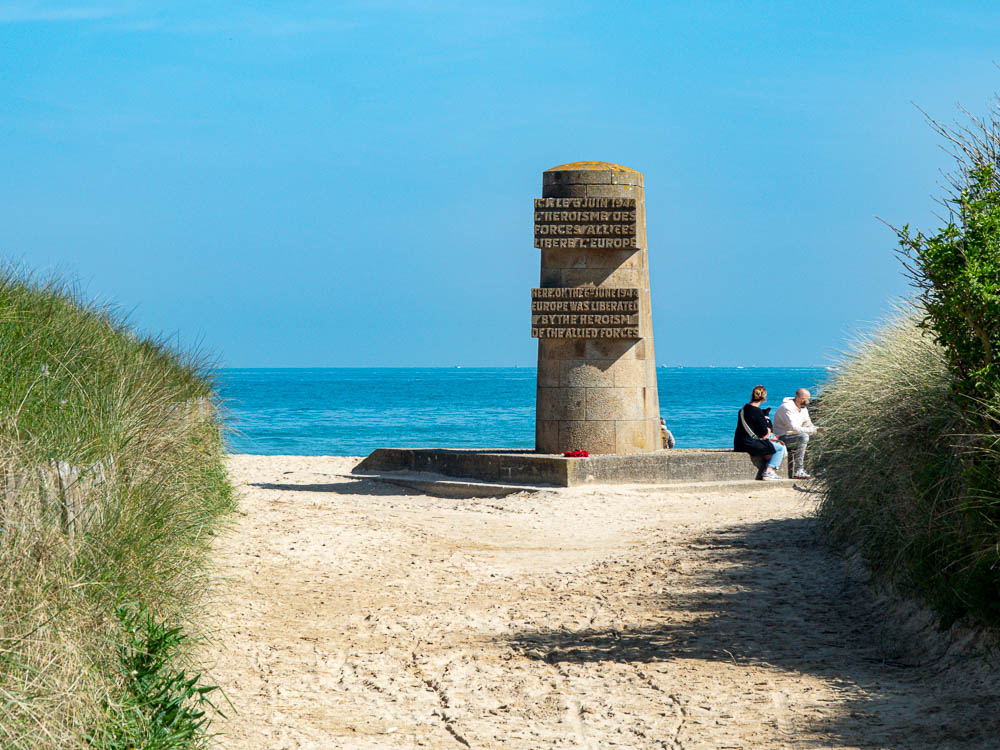
Le Manoir de Mathan
You may notice a theme here—hotels in Normandy are stunning! Here’s another in the same convenient location with more fabulous French farmhouse feels.
Le Manoir de Mathan, on such a beautiful, garden-y property reminds me a lot of Monet’s house in Giverny.
This is another with an “Awesome” rating (I never recommend anything less than Excellent) and reviewers love the location, the restaurant and breakfast, and the large, comfortable rooms. Check out this gorgeous property and more reviews in the link below.
Book your stay here: Le Manoir de Mathan
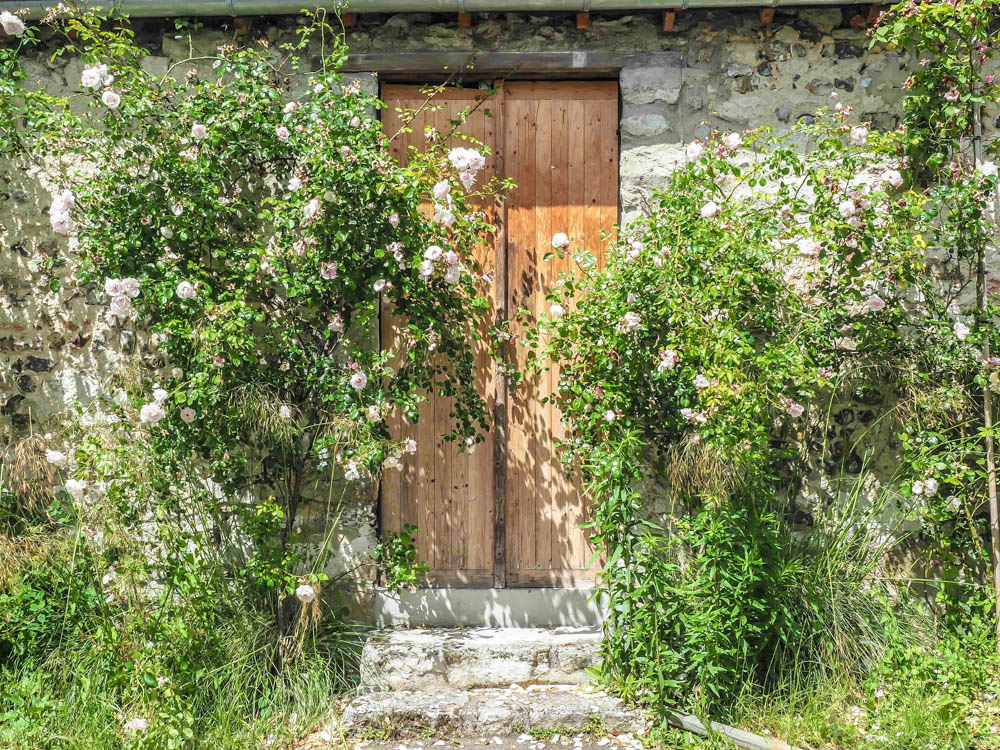
La Cremaillere
And if it’s on the beach you want, you’ll want to check out La Cremaillere. This French modern hotel is located directly on the beach of Courseulles-sur-Mer (Juno Beach). This oceanfront property couldn’t be in a better location for exploring all that the Juno Beach area has to offer.
This hotel’s location is a favorite among those who’ve stayed here. Reviewers also love the breakfast, the comfortable rooms, and the excellent sea views. Check out some of the lovely photos and more reviews in the link below.
Book your stay here: La Cremaillere
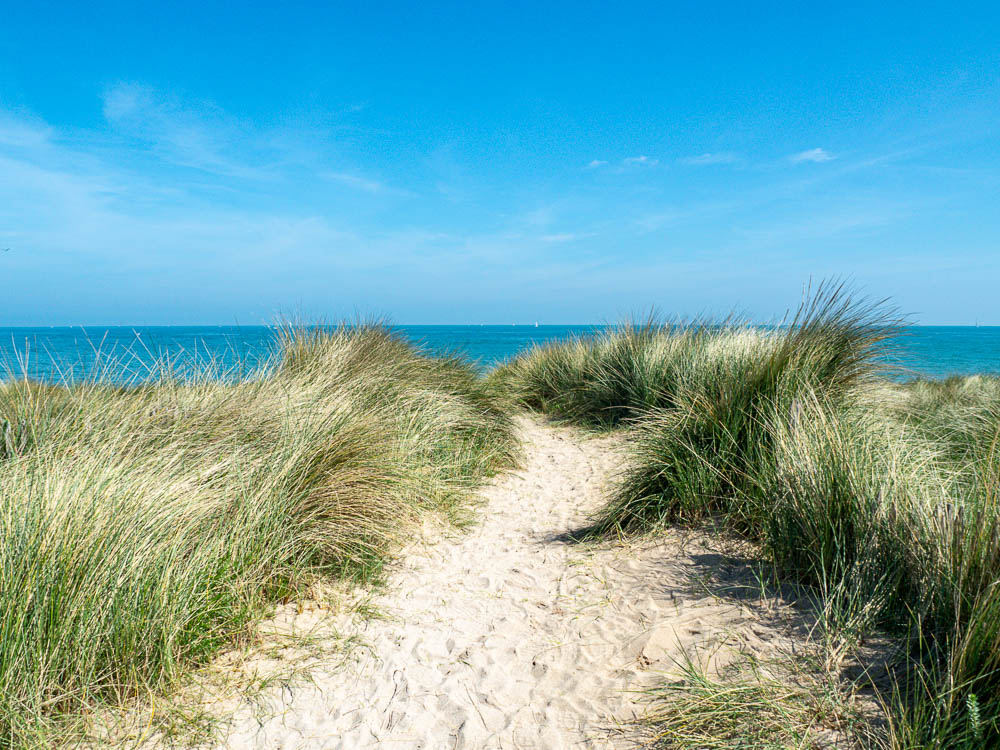
More info for your visit to Juno Beach, Normandy
- Want more hotel options? Check out Juno Beach hotels on Booking.com. (Expedia and Hotels.com often have good deals too.) VRBO is best for property rentals.
- Need a rental car? Check out the best local deals here.
- Travel planning: Pick up a Normandy guidebook and this super helpful France customs and culture guide.
- For Normandy tours: Check out the best local options and the best day tours from Paris here.
- Be sure to watch Saving Private Ryan, The Longest Day, and Band of Brothers before your visit!
- What else have I covered in France? Check out my France archives.
Like this post? Have questions about visiting Juno Beach? Let me know below in the comments. Have a great time in Normandy!

Save this info, pin this image:
